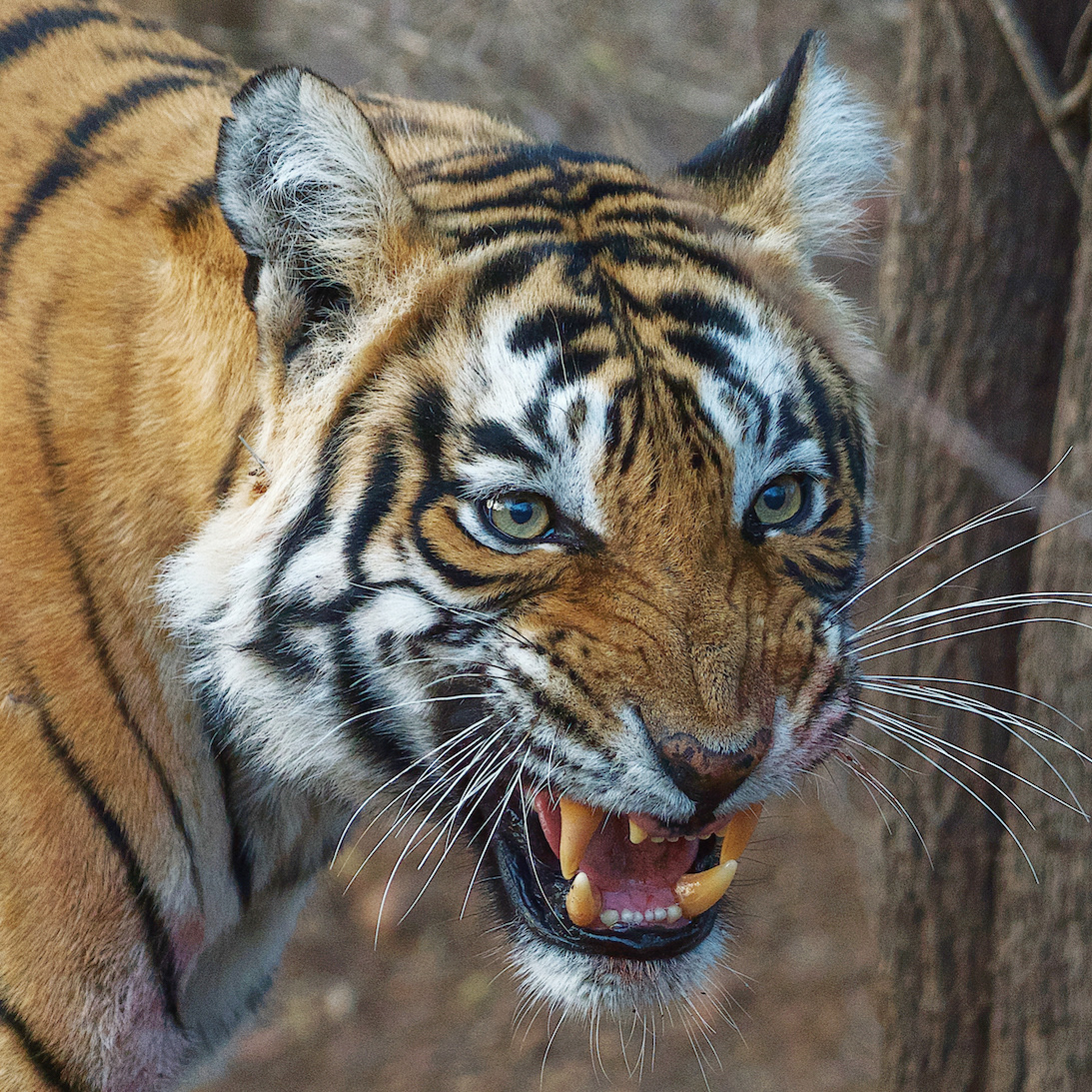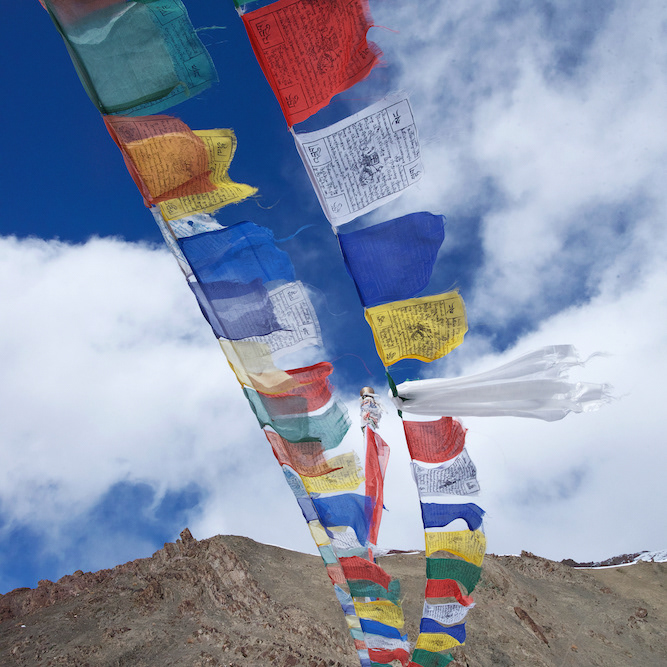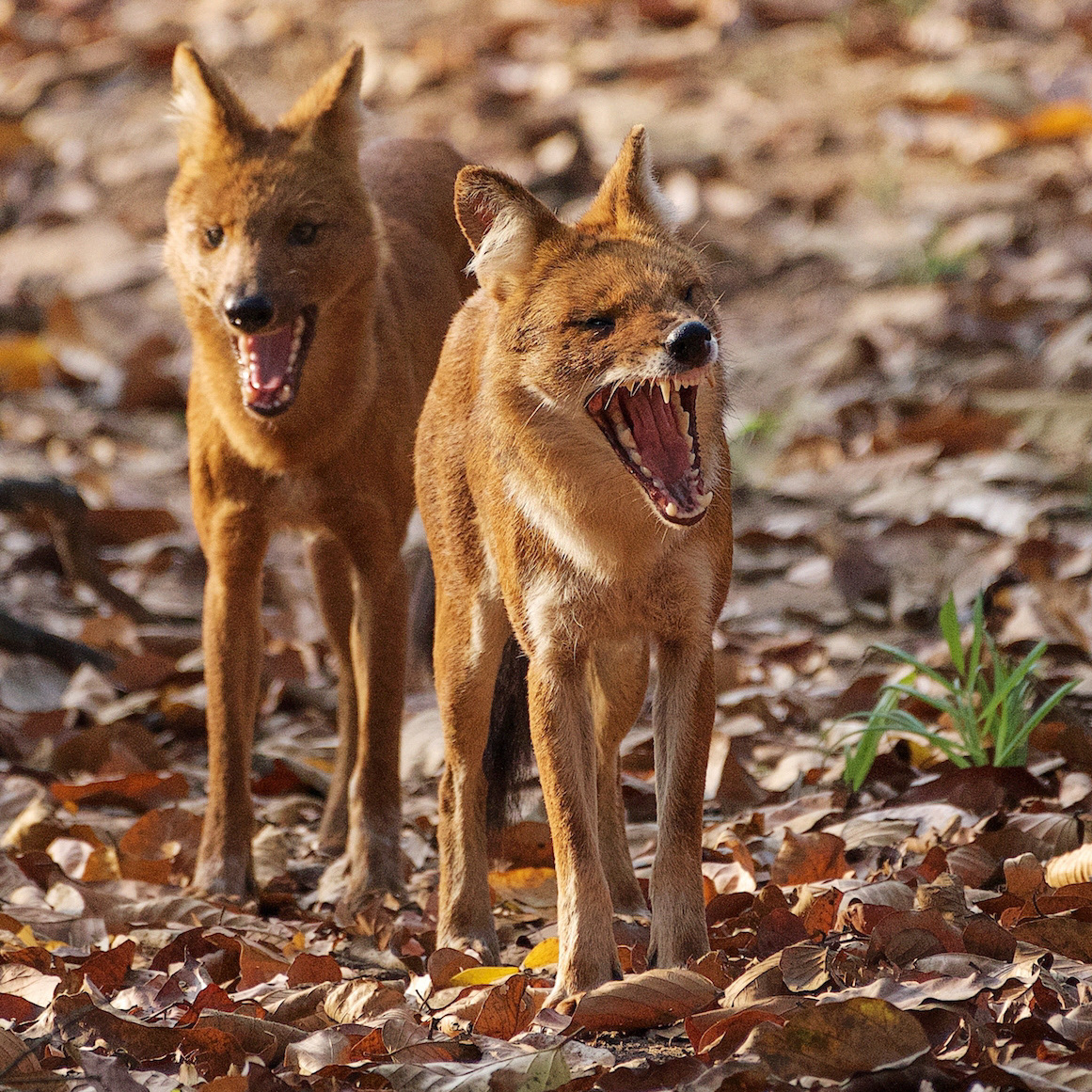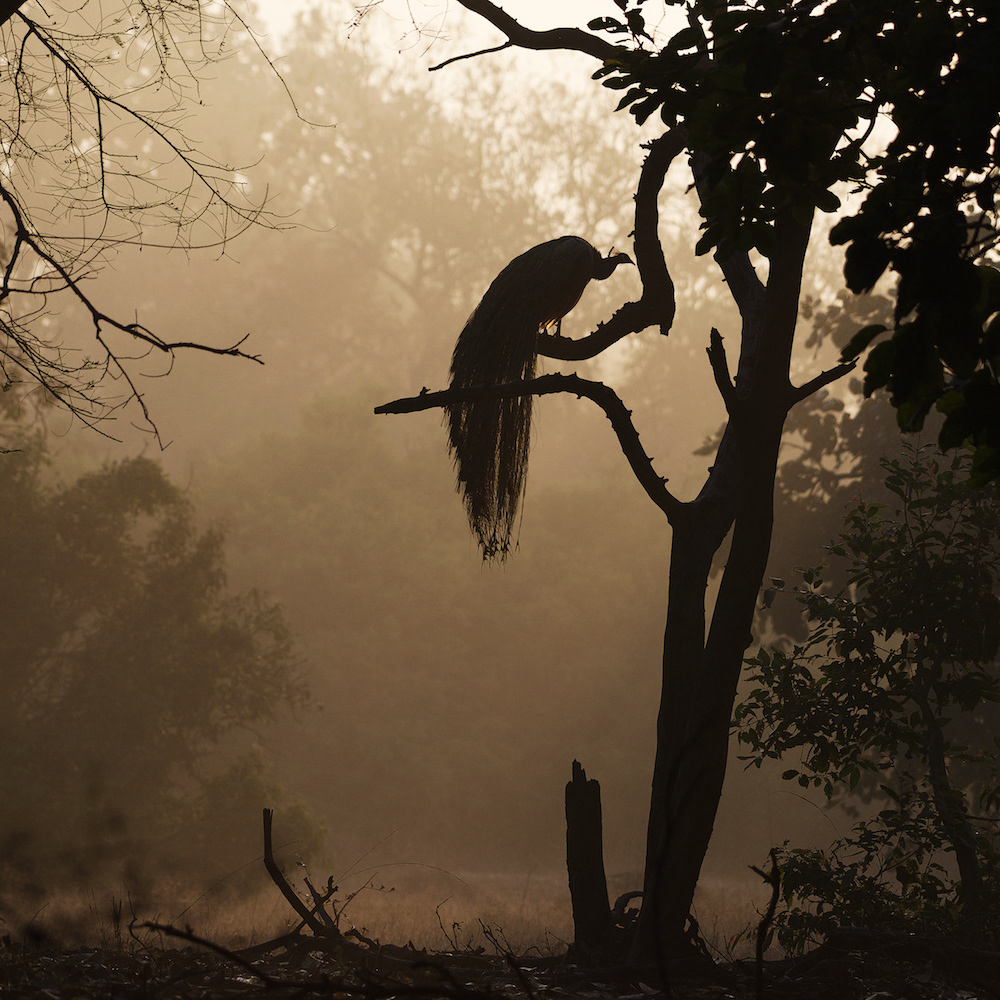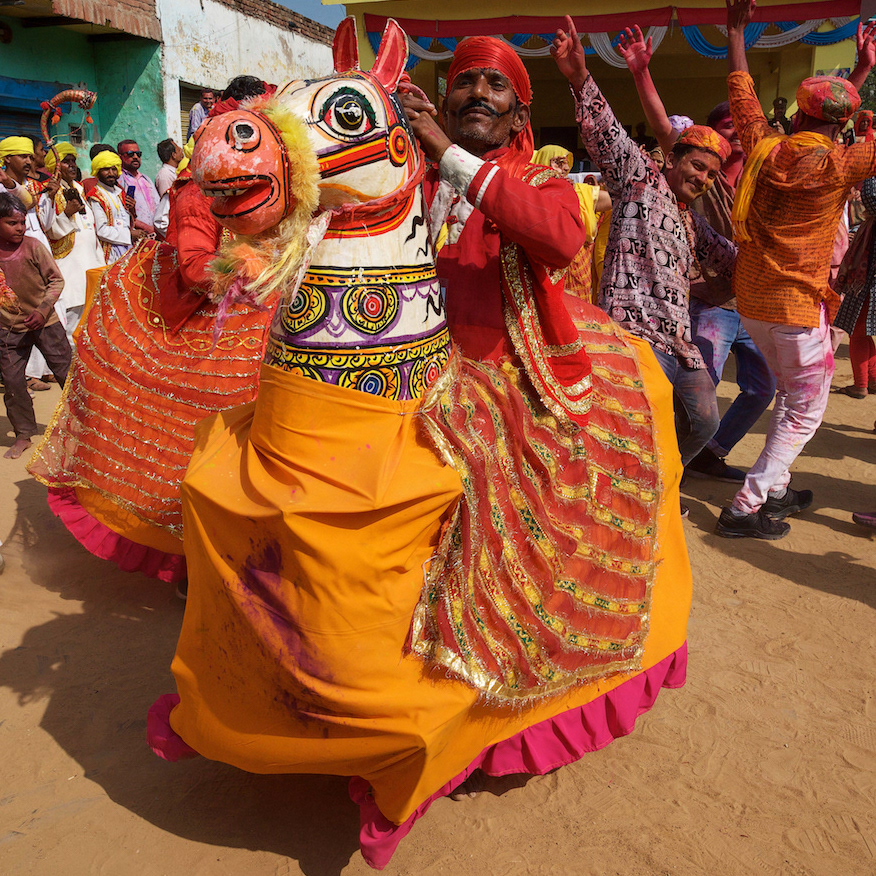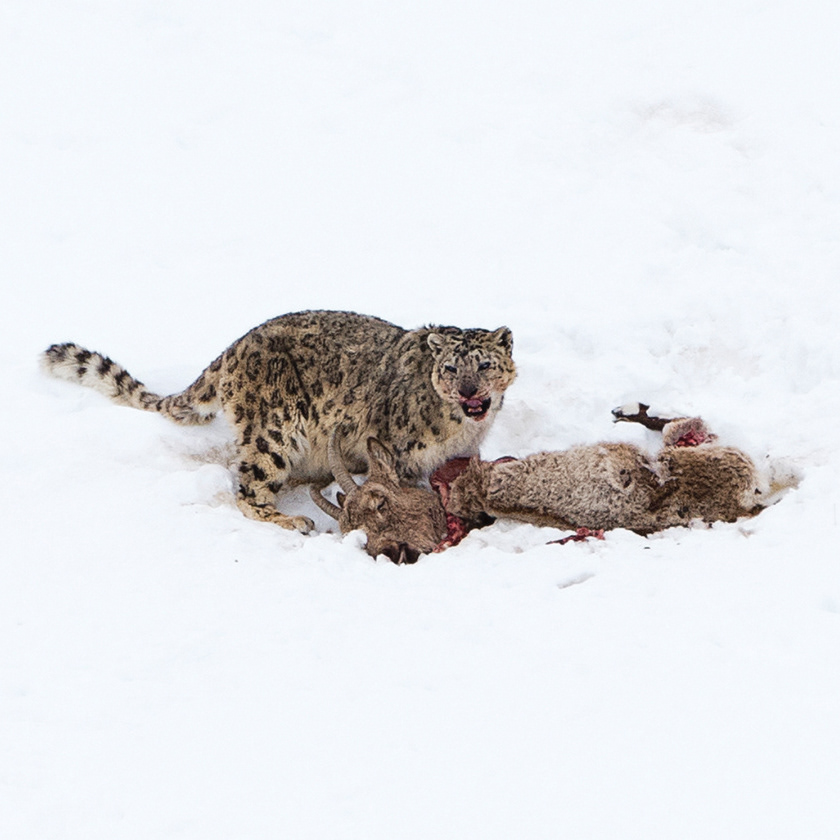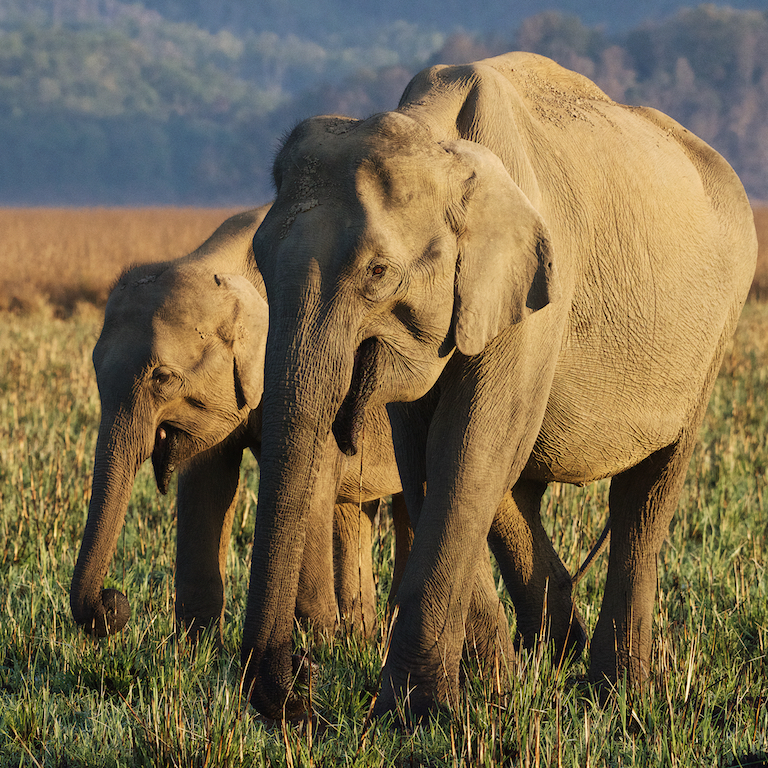Holi is the Hindu spring festival of colours. The celebration is said to have its origins in the villages of Barsana and Nandgaon in the district of Mathura in Uttar Pradesh. Here, people celebrate a variation called Lathmar Holi (festival of sticks and colours). Lathmar Holi takes place a few days before actual Holi. In 2020, Lathmar Holi was celebrated on 4th & 5th March and Holi was on 10th March.
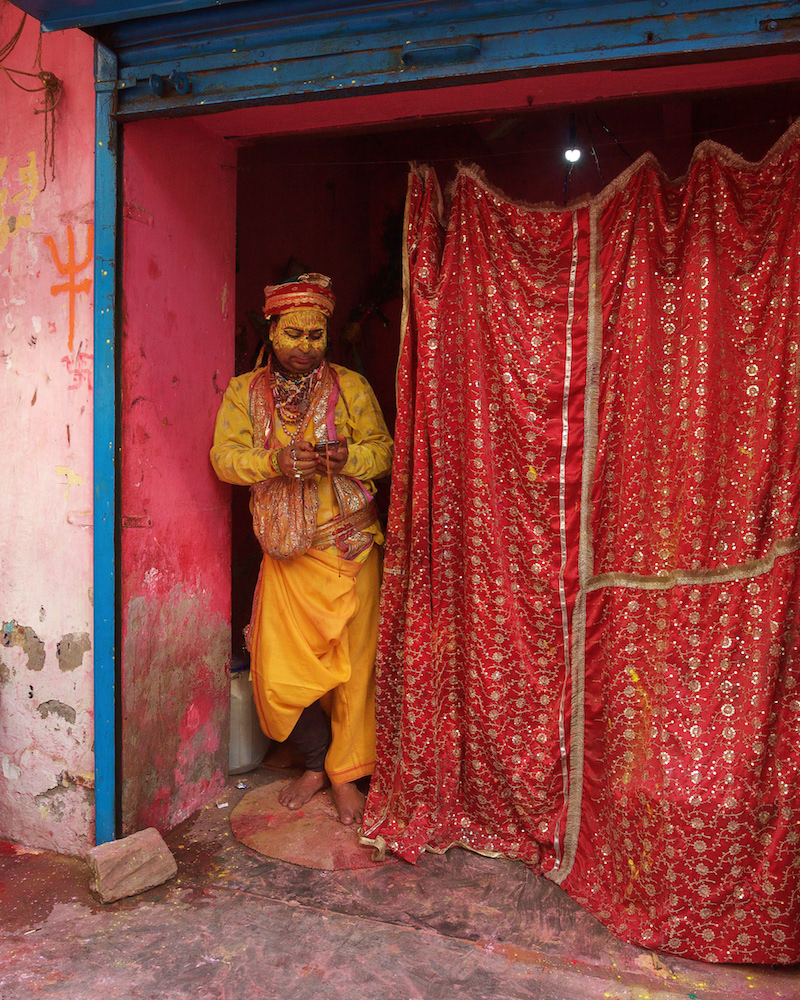
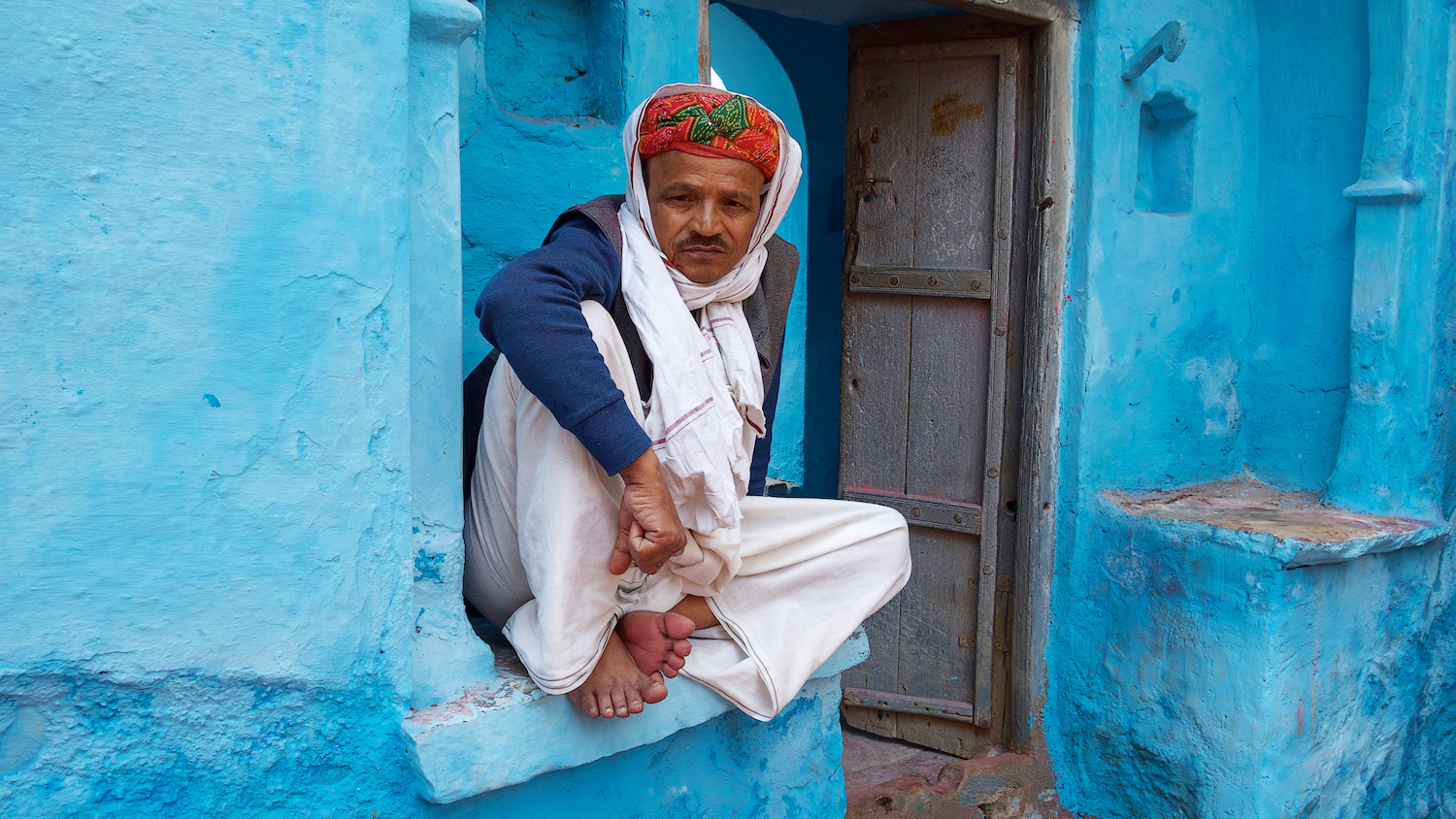
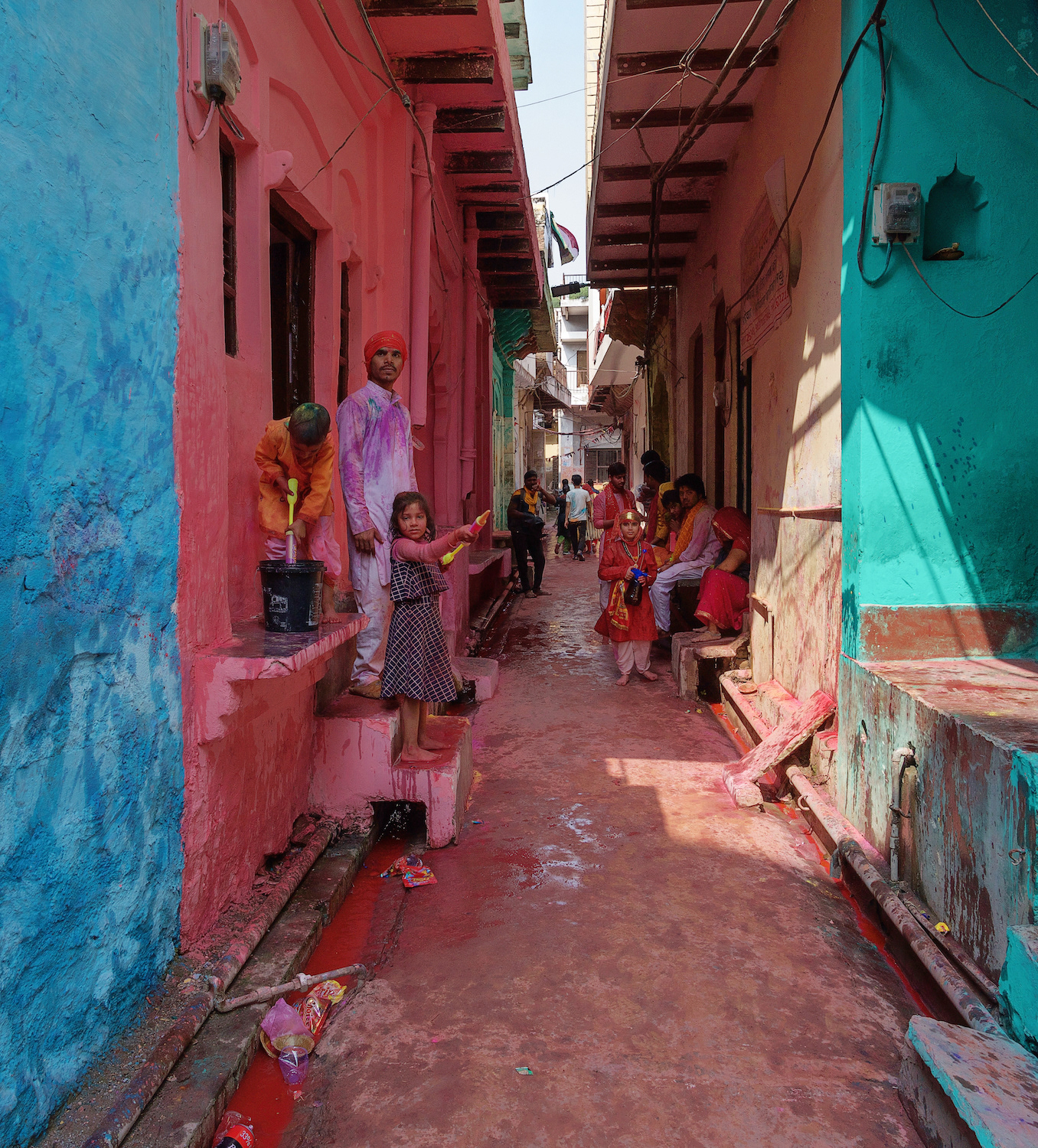
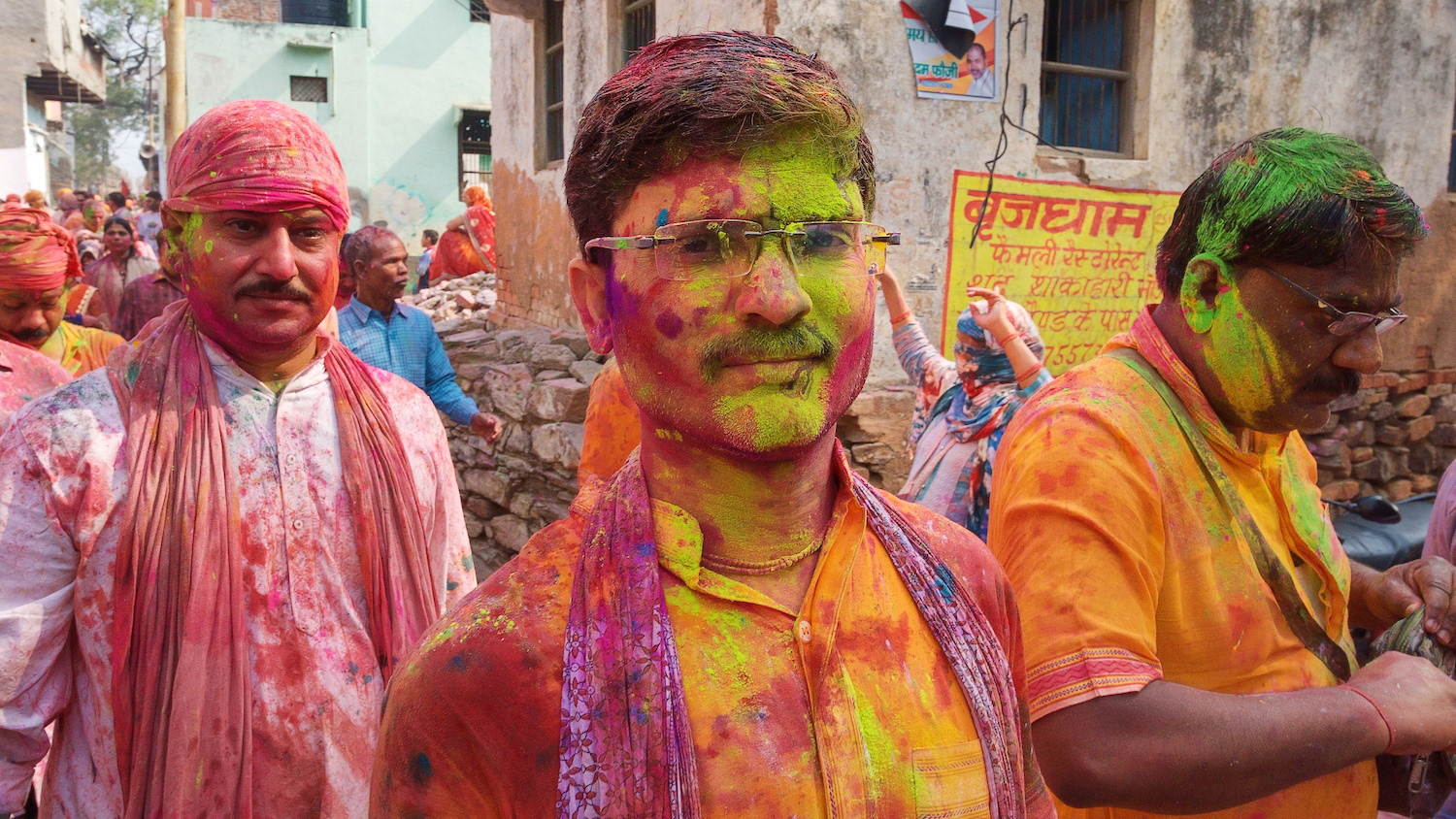

Having taken part in various local Holi celebrations on previoius trips to India we've always wanted to photograph the famous Lathmar Holi festival. During our two days there, we were accompanied by Puru Sharma, a photographer and guide, from Agra. His local knowledge and experience enabled us to capture some great images of this incredibly colourful occasion.
Barsana is the birthplace of Radha, Hindu Goddess and consort of Lord Krishna. Legend has it that Lord Krishna, from Nandgaon, along with his friends, visited his beloved Radha's village and teased her and her friends and drenched them with colours. Objecting to this, the women of Barsana drove them away with wooden sticks (lathis).

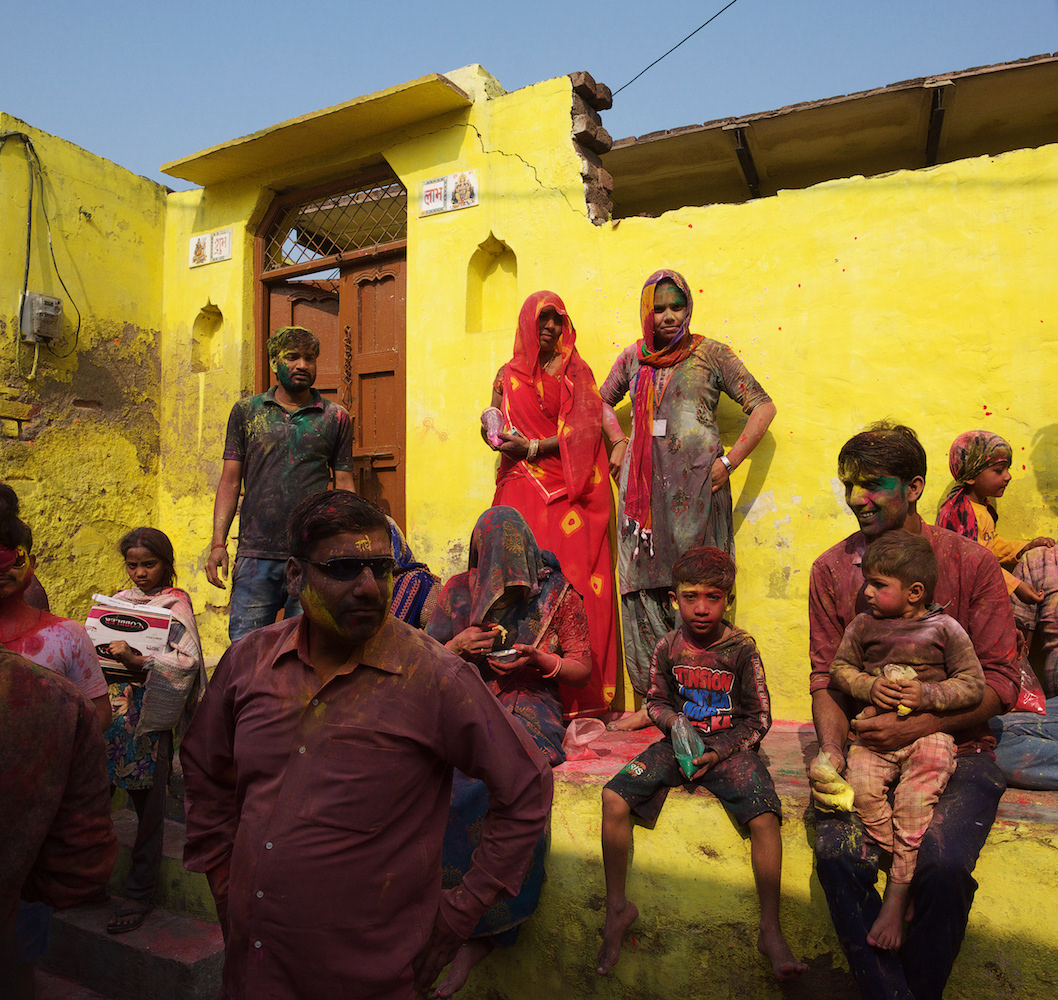
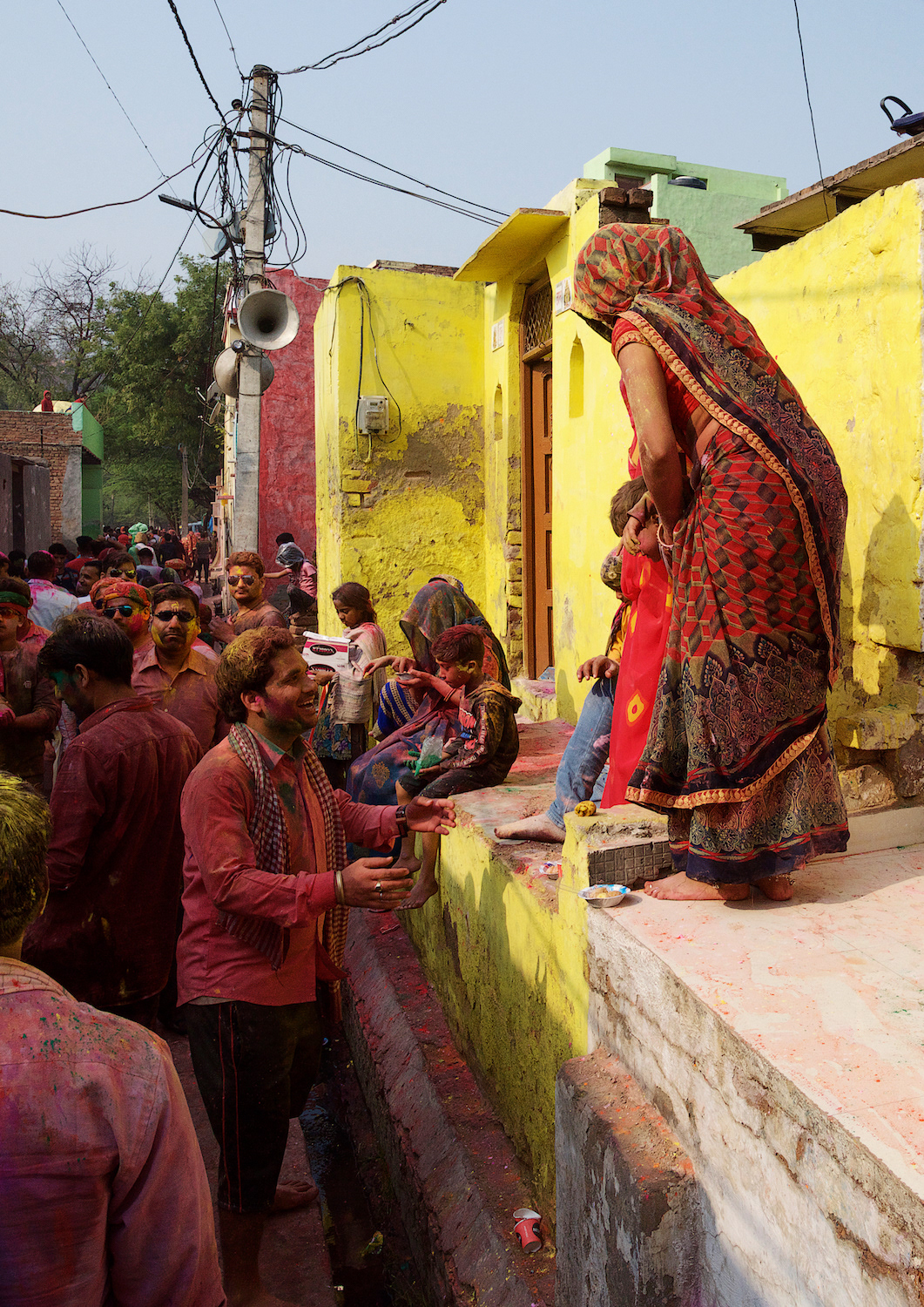
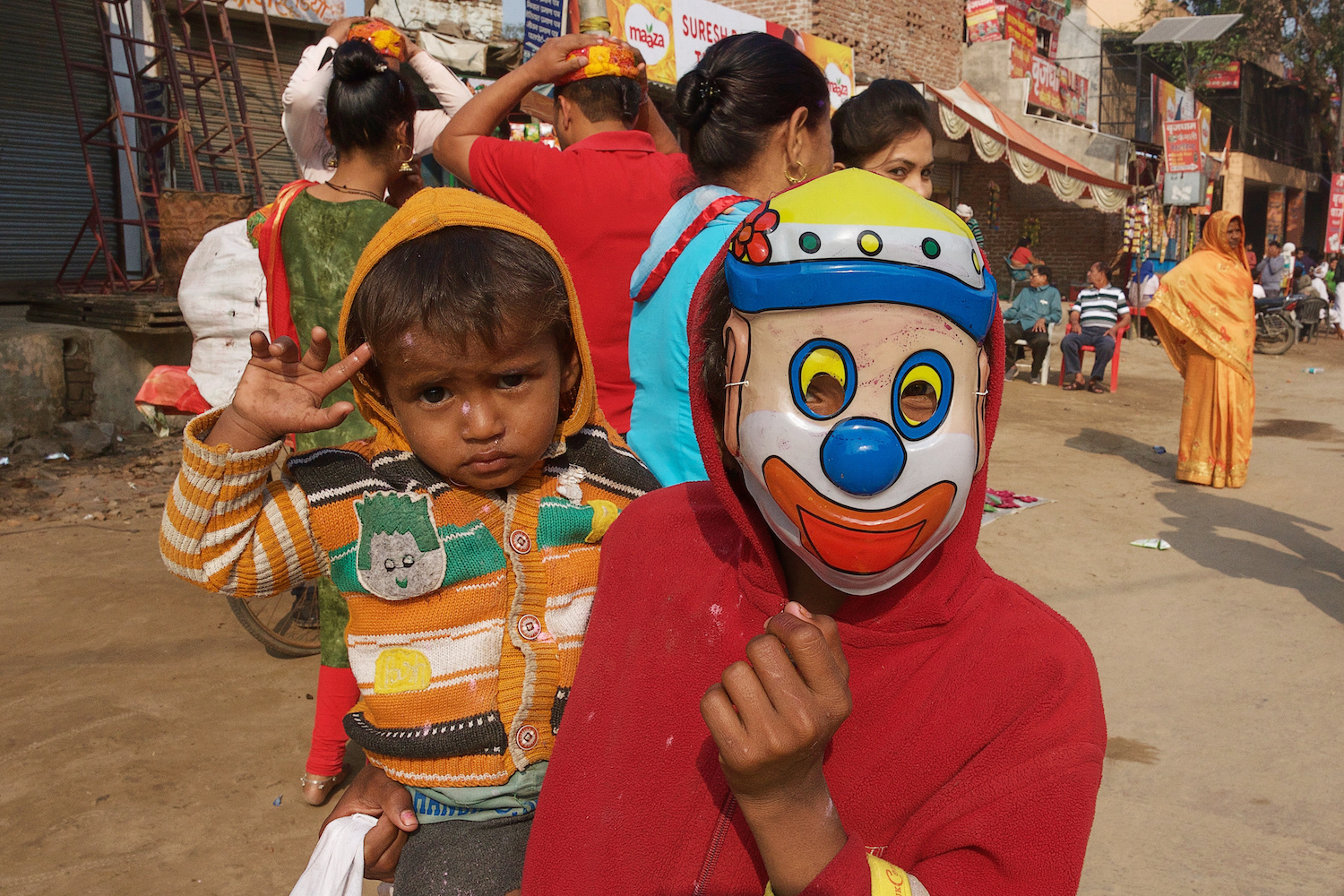
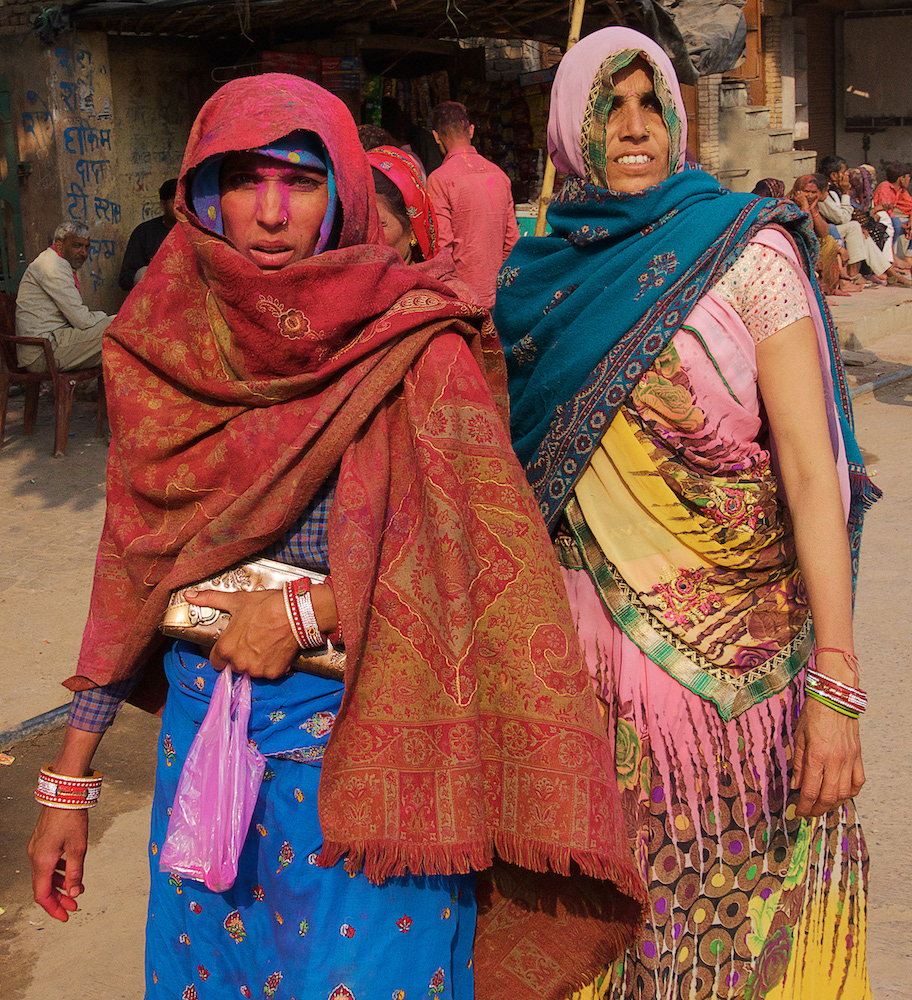
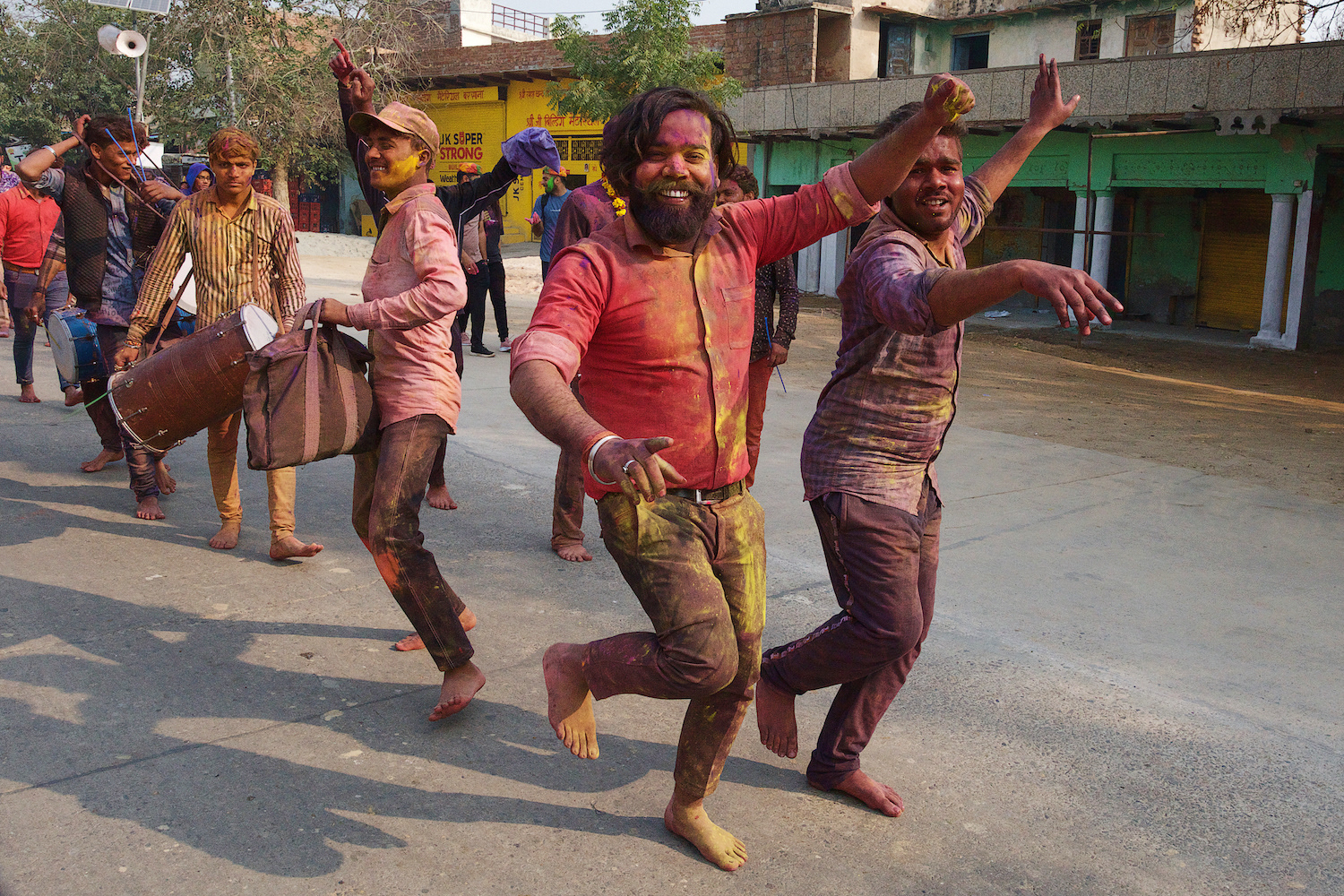
On the first day of the celebrations in Barsana, the crowds make their way through the streets singing and dancing whilst throwing coloured powder and water at each other.






The coloured powder used in the celebrations is available to buy from the many street vendors, either in small bags or by the sackful!
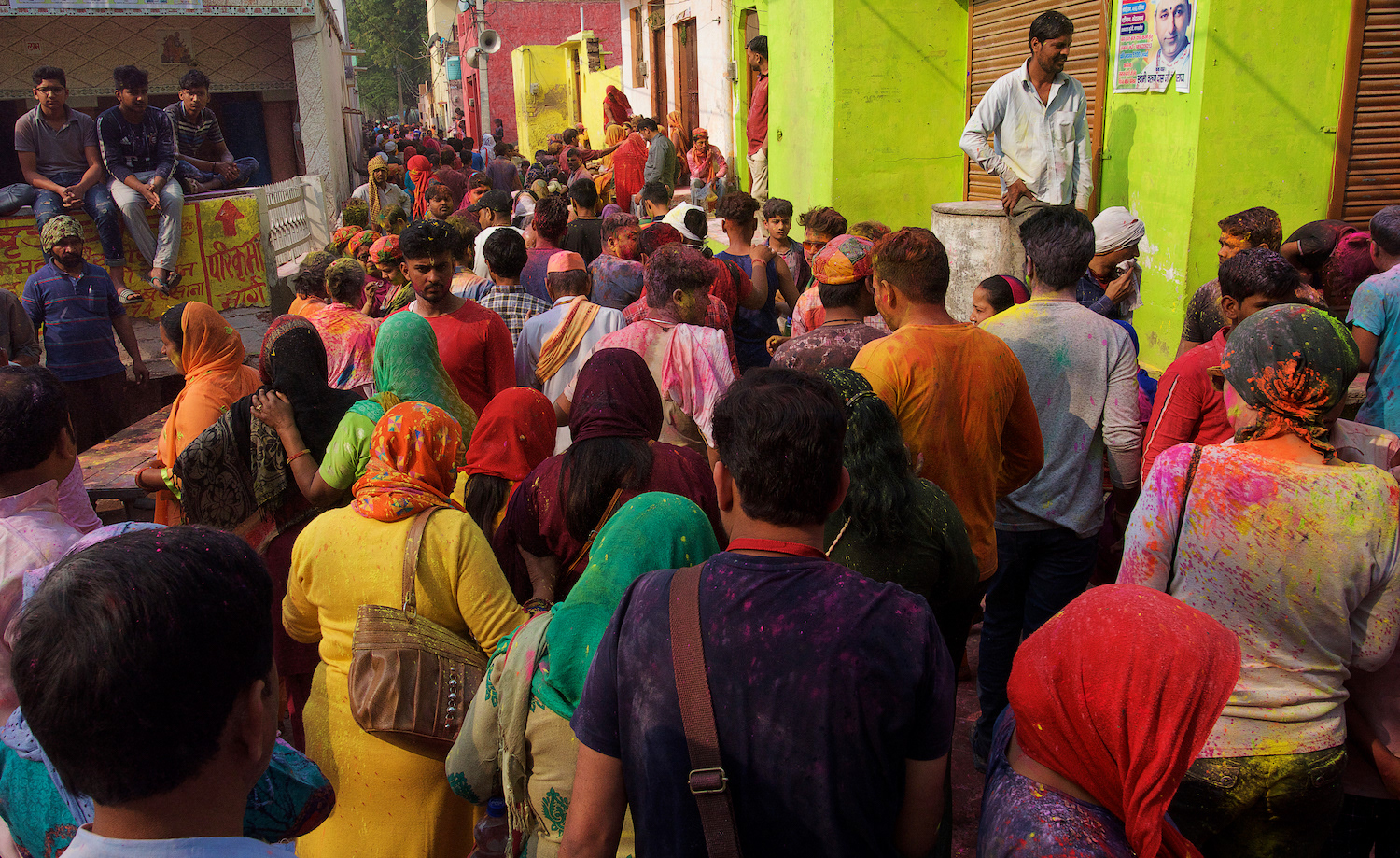
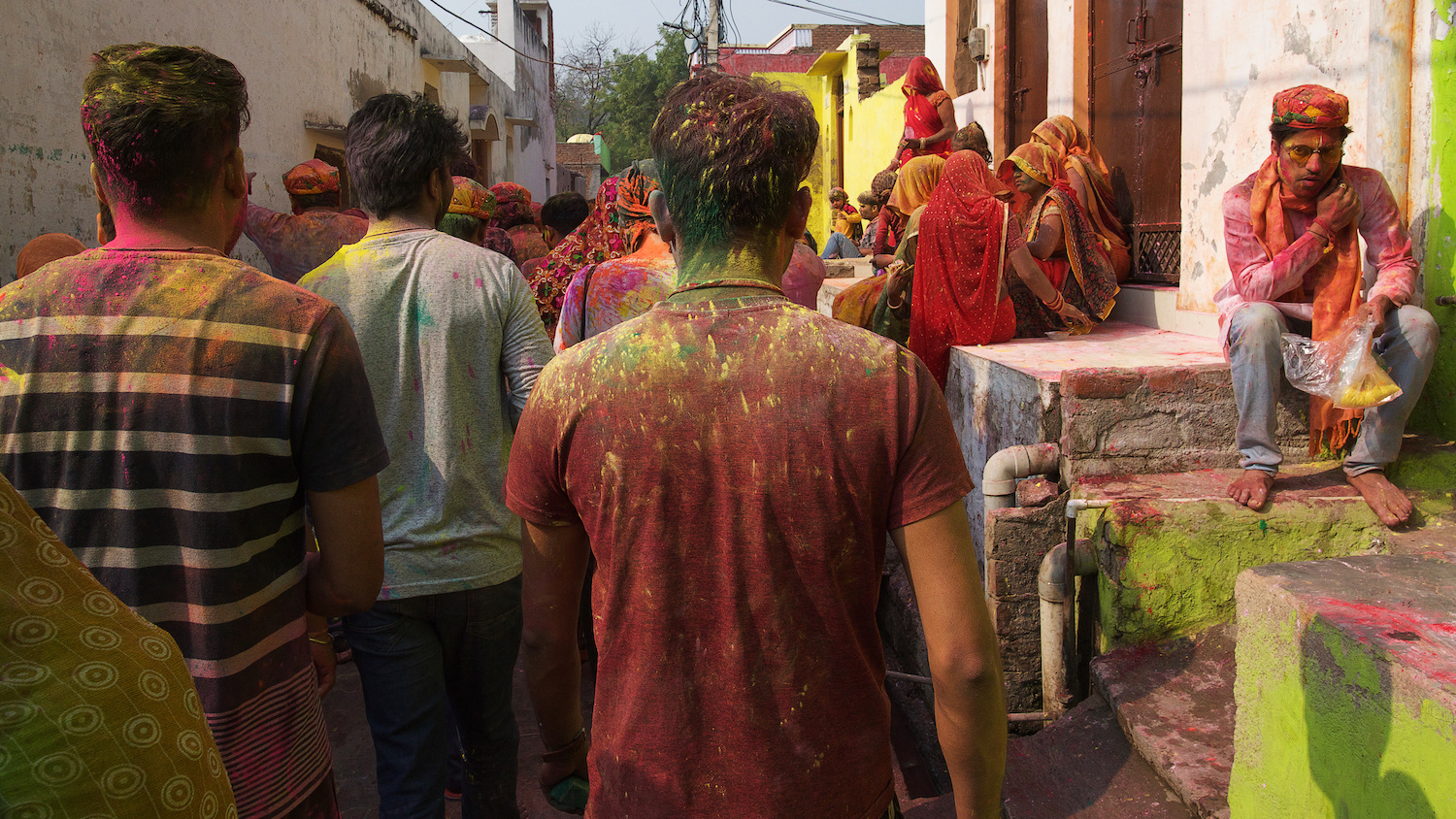

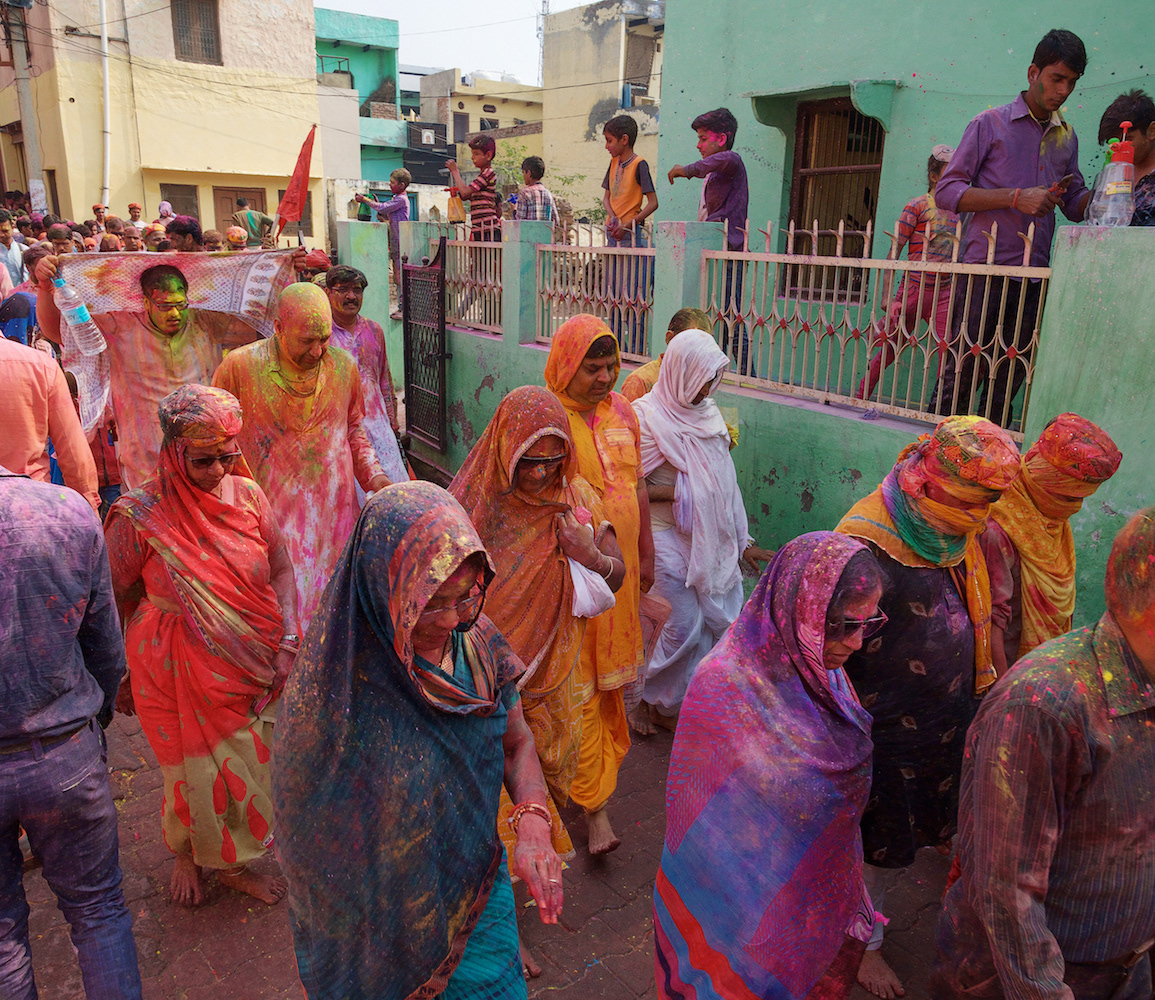
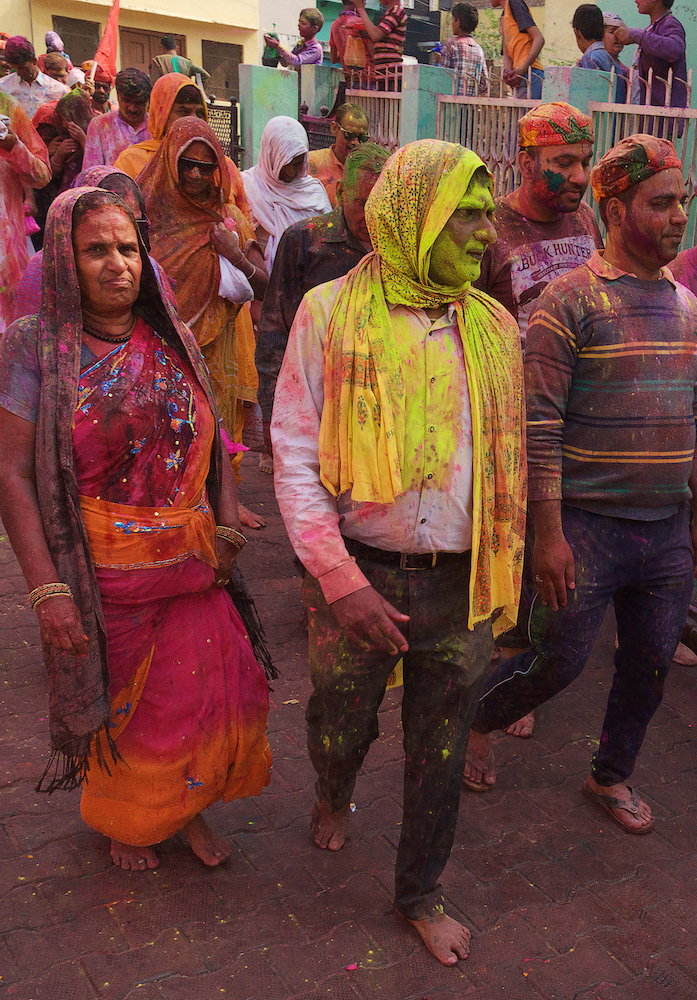

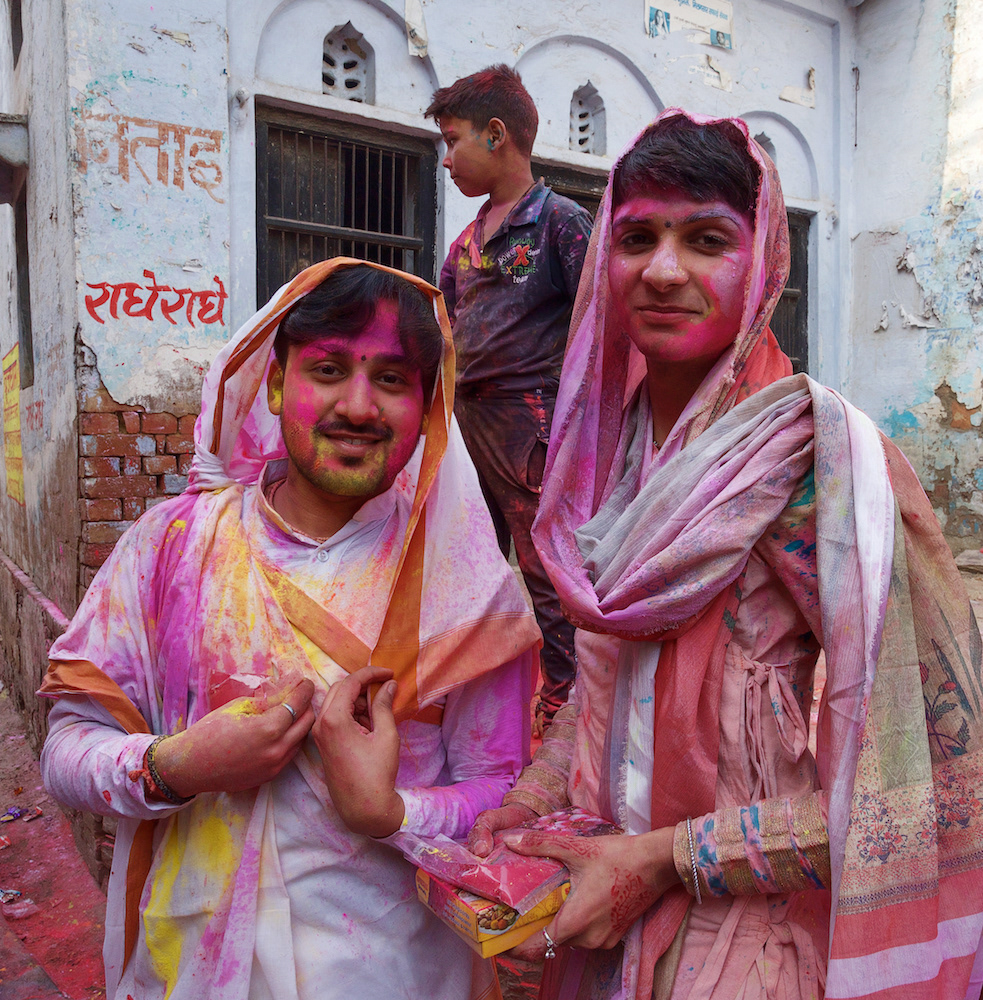
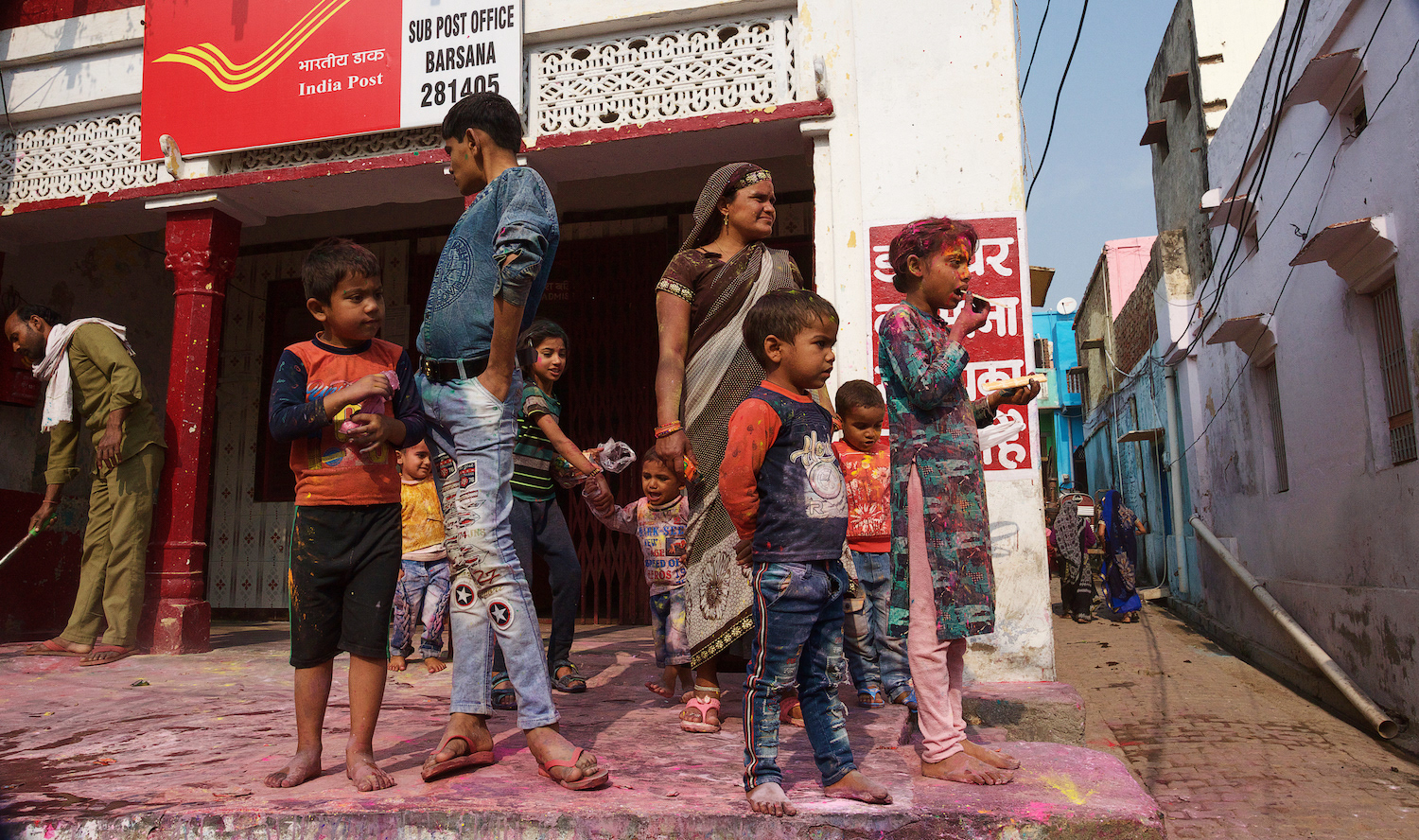
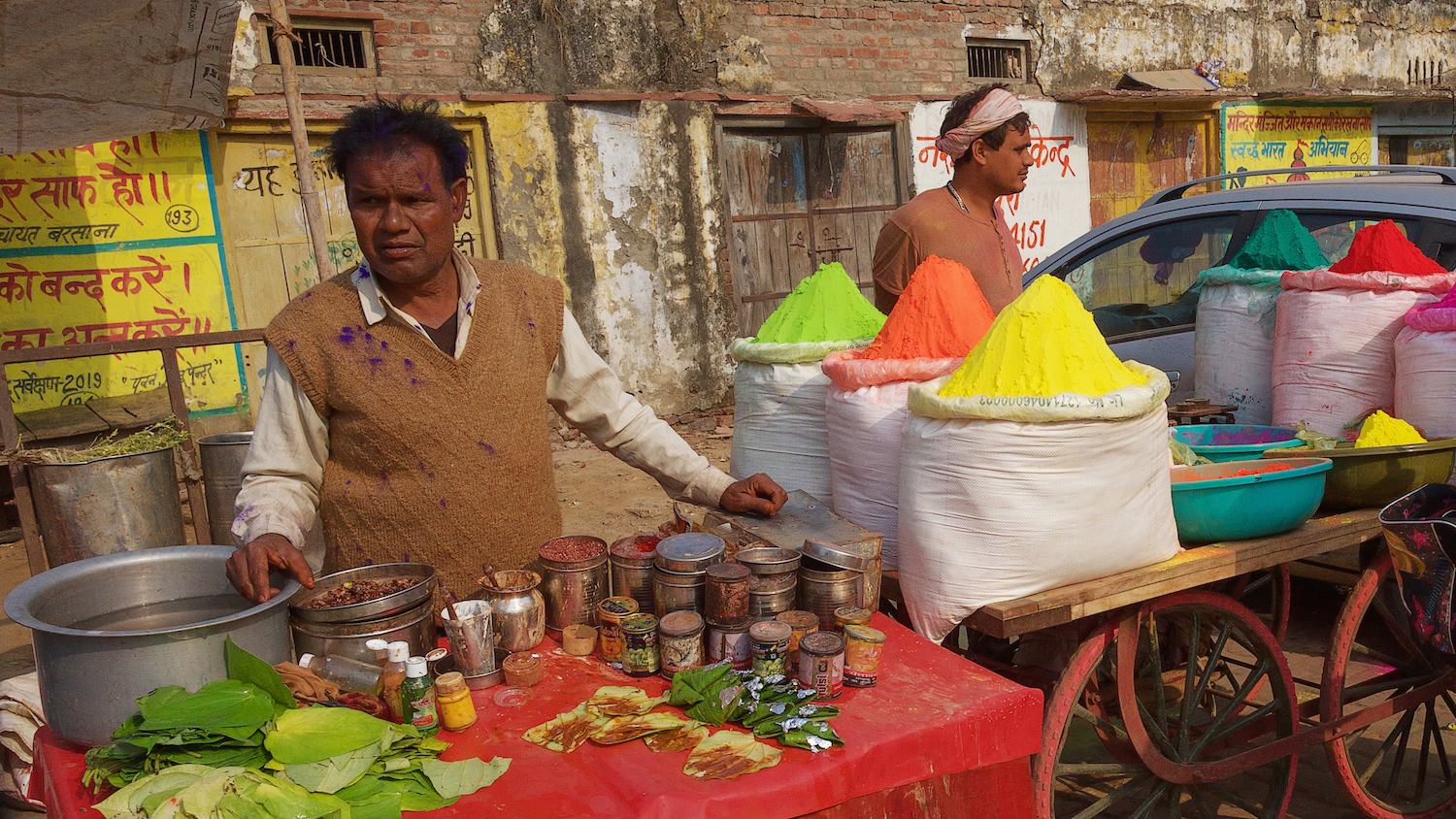

The brightly coloured powder, also known as gulal or abir, is often used in Hindu rituals.
People wish each other 'Happy Holi' whilst smearing coloured powder on each other's faces.
"Happy Holi" in Hindi is "Holi mubarak".
The streets begin to fill with revellers singing, dancing and throwing coloured powder.
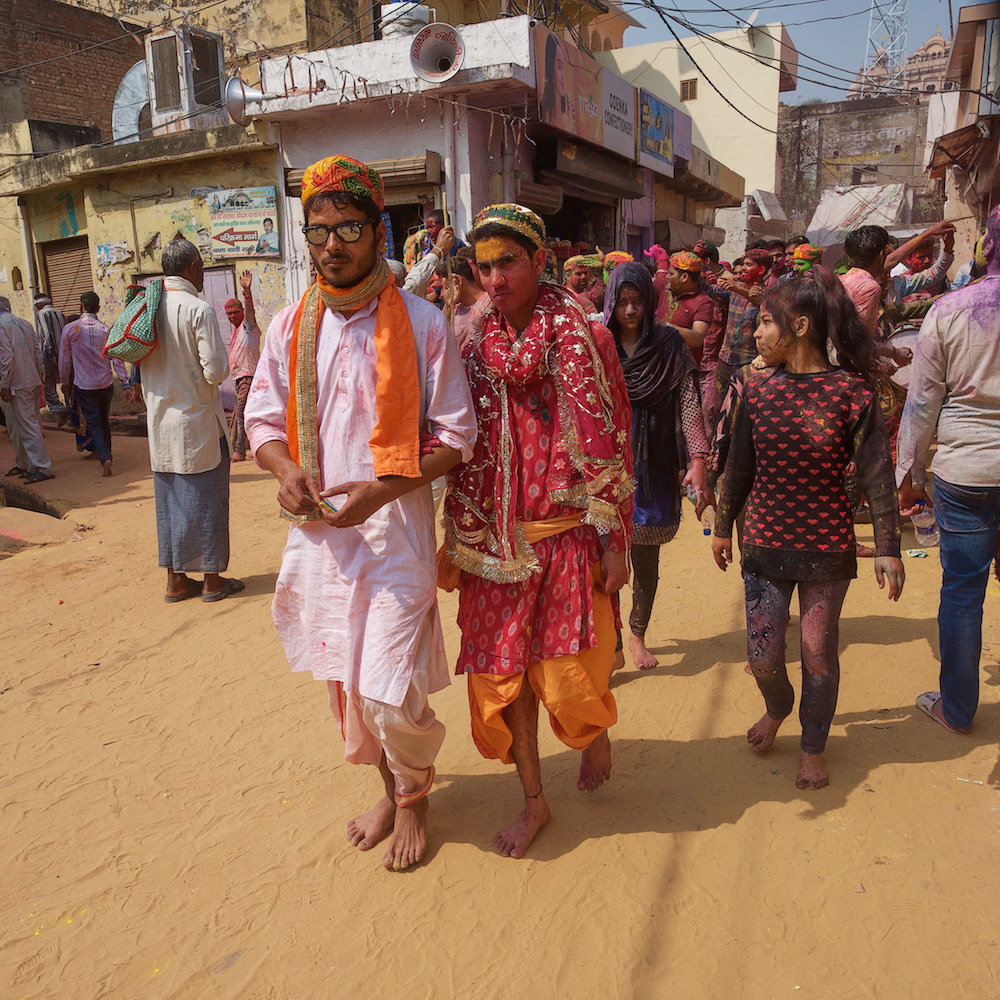
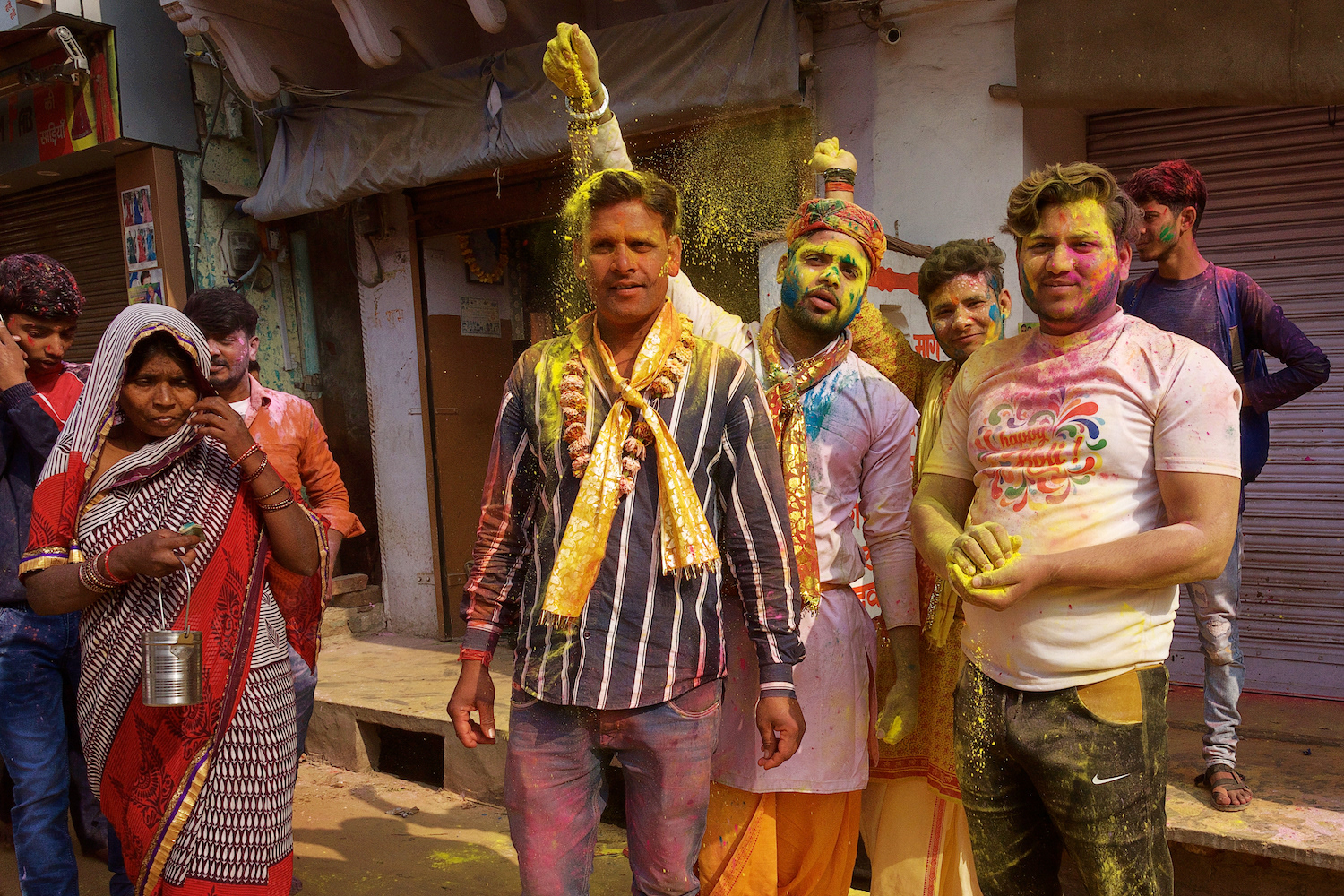
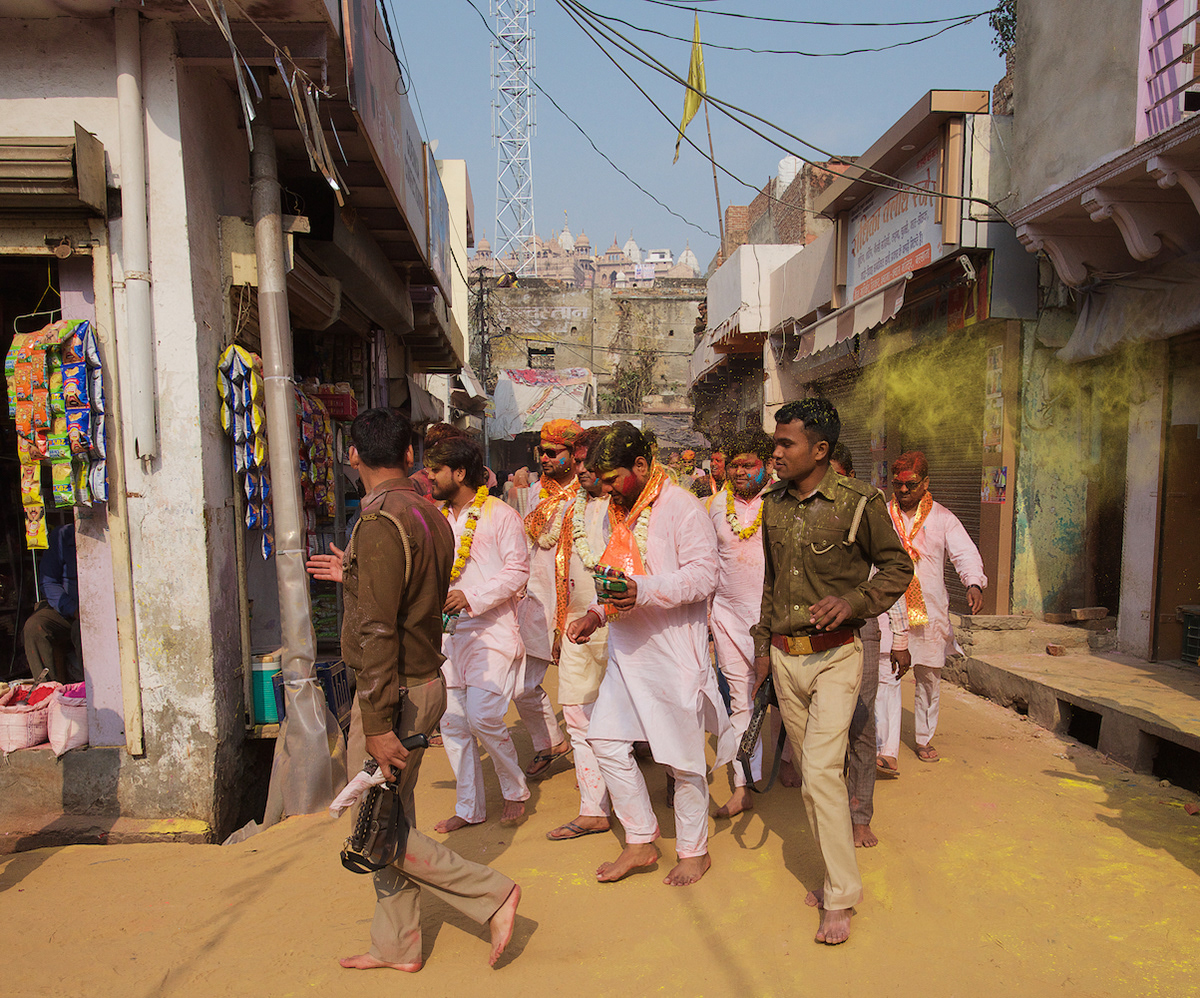
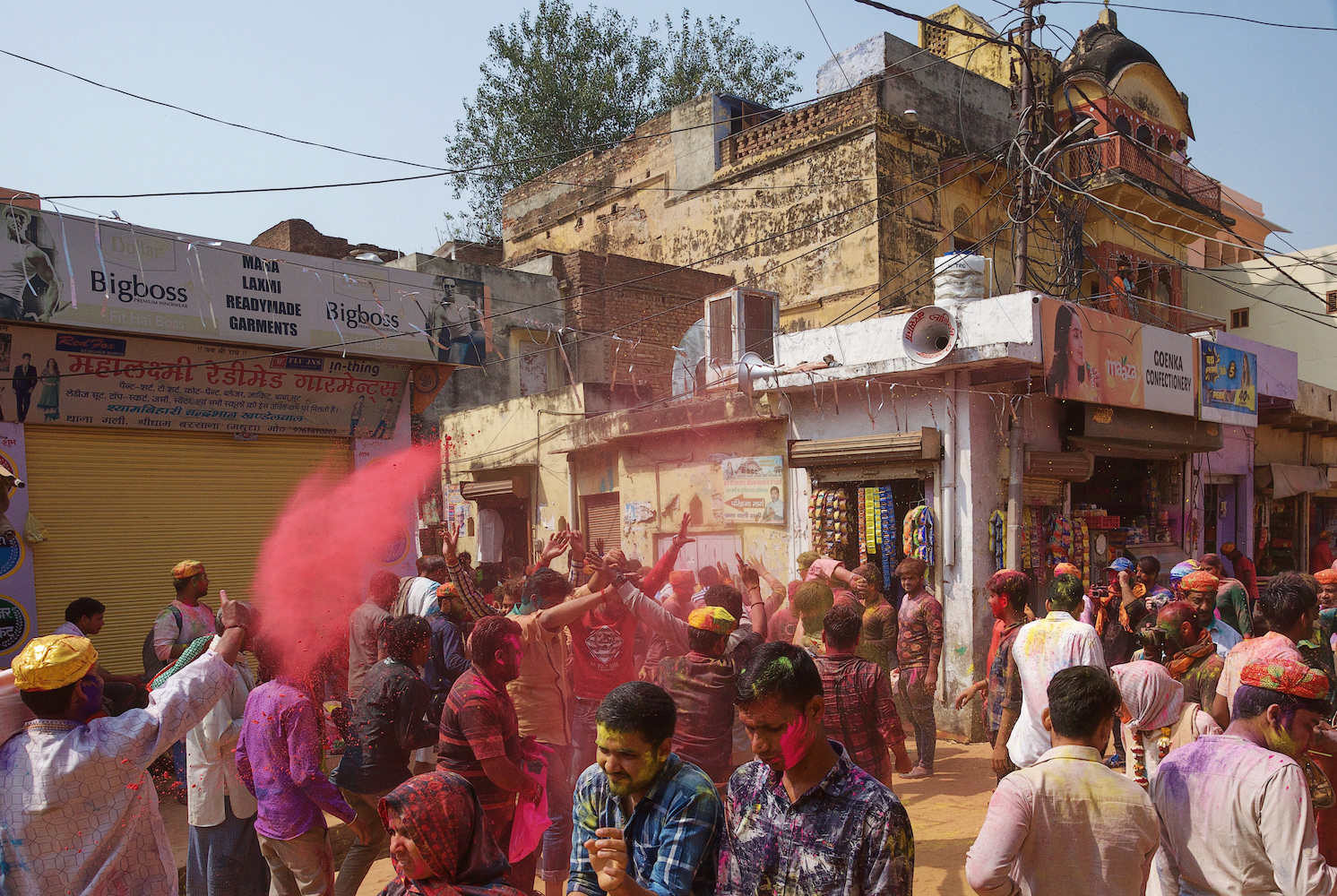

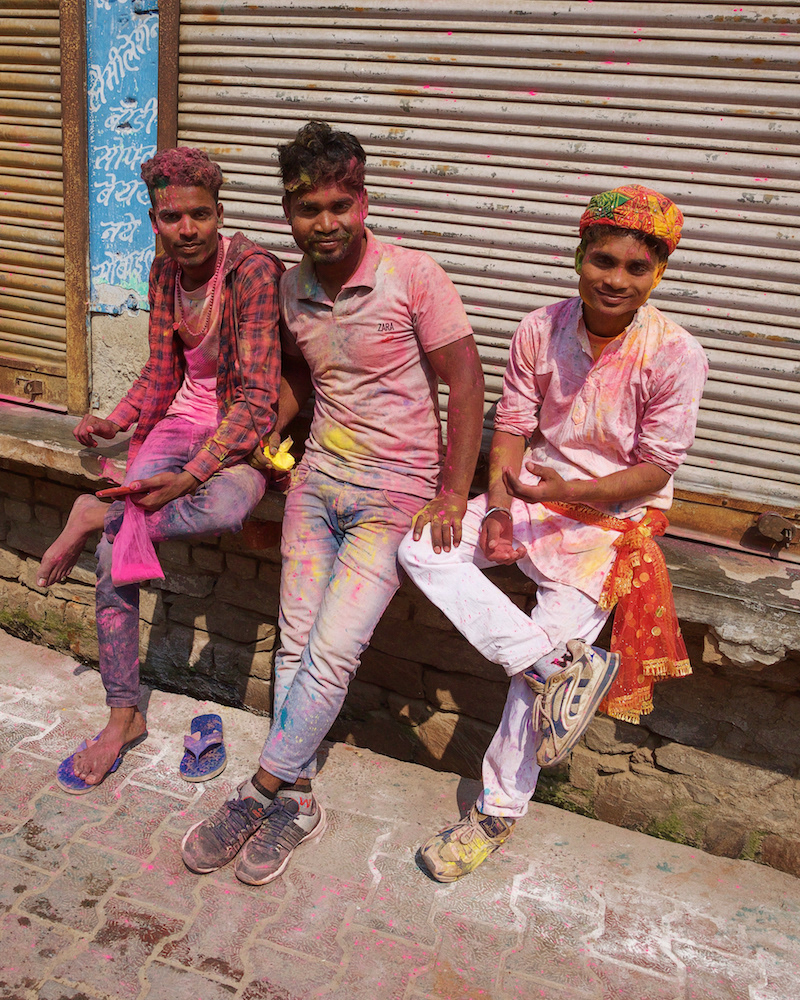

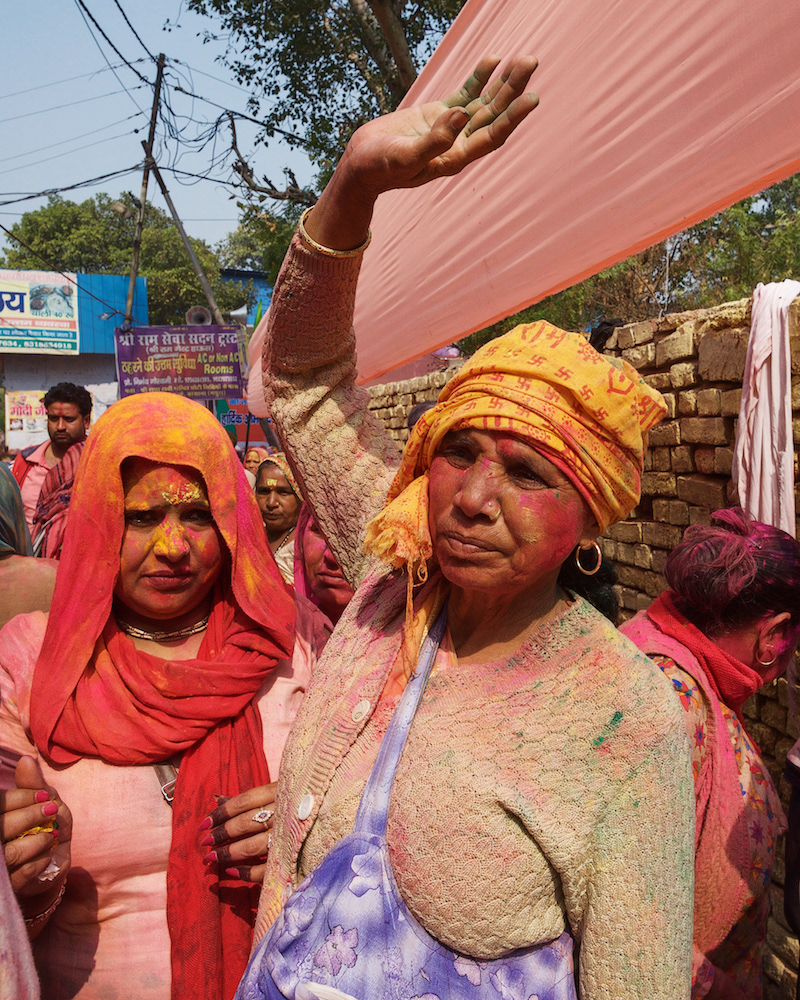


The streets are packed with people enjoying the celebrations. The air is filled with loud music, singing and clouds of colour.
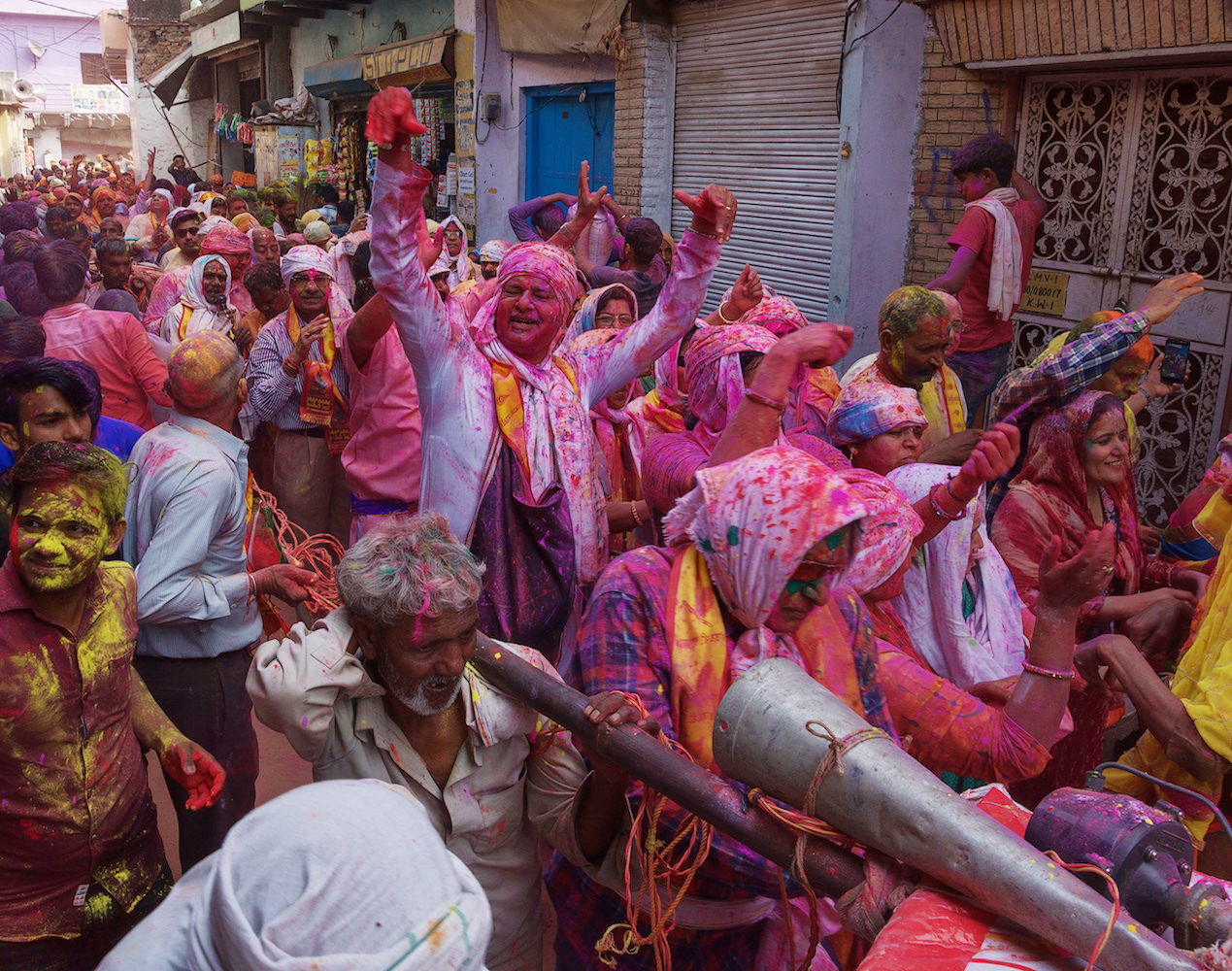
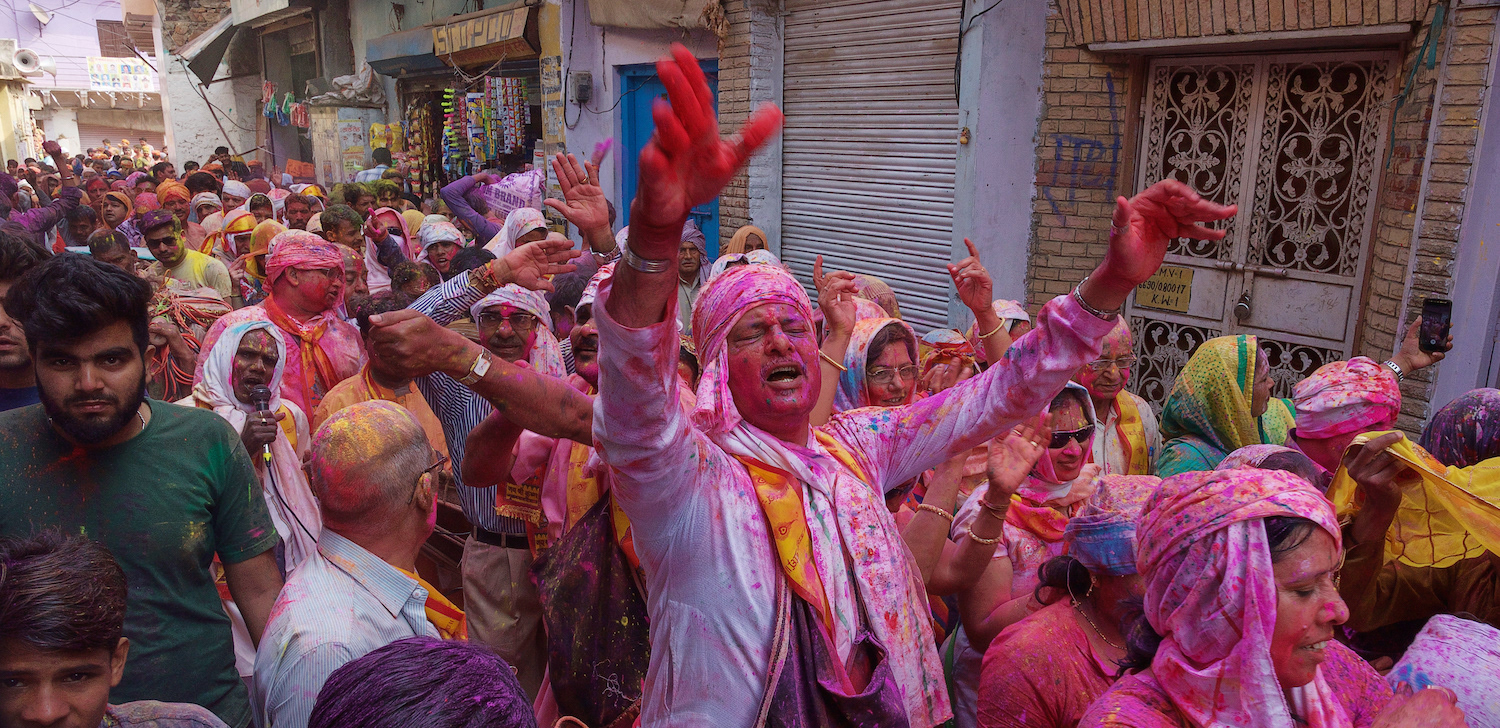
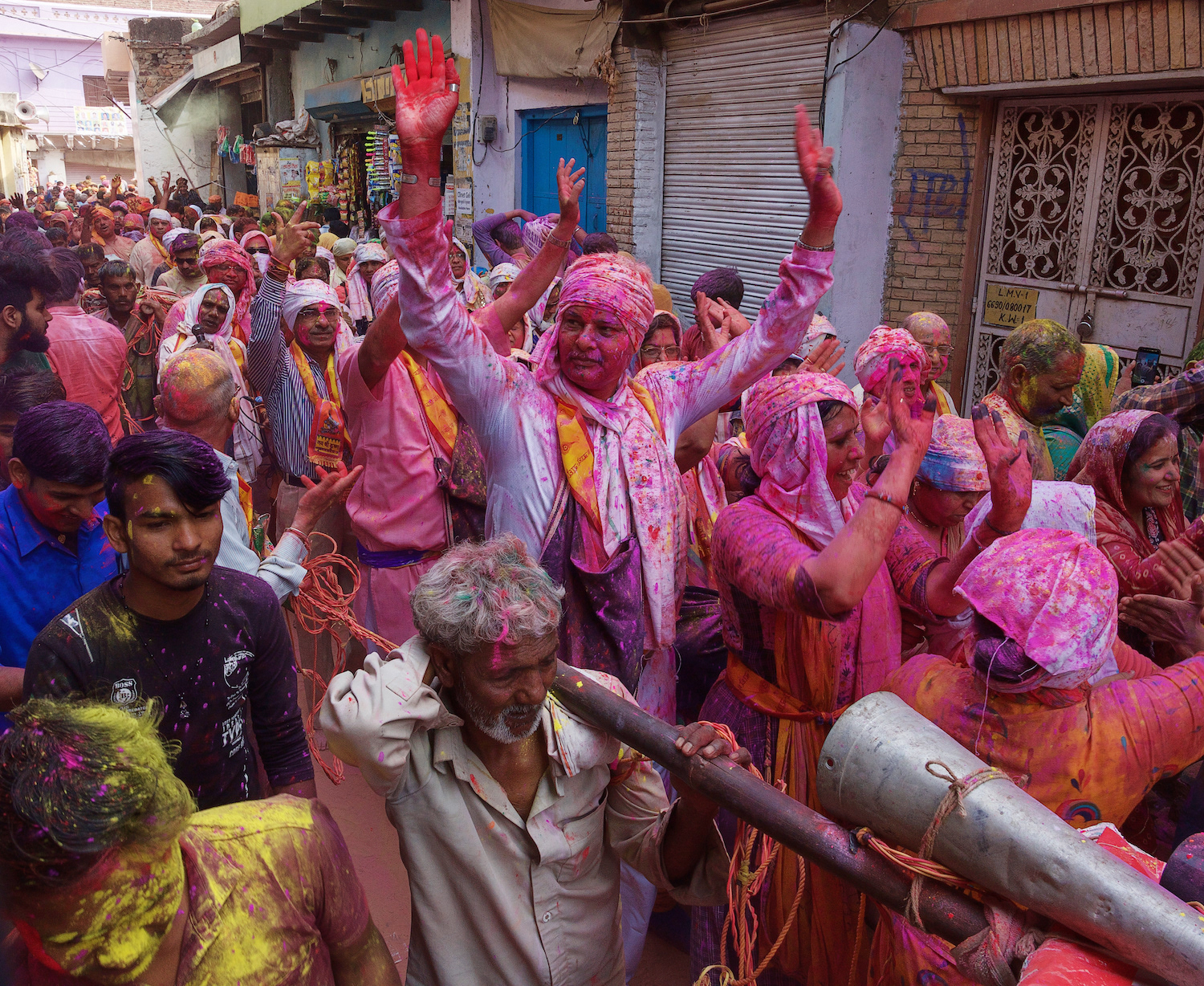
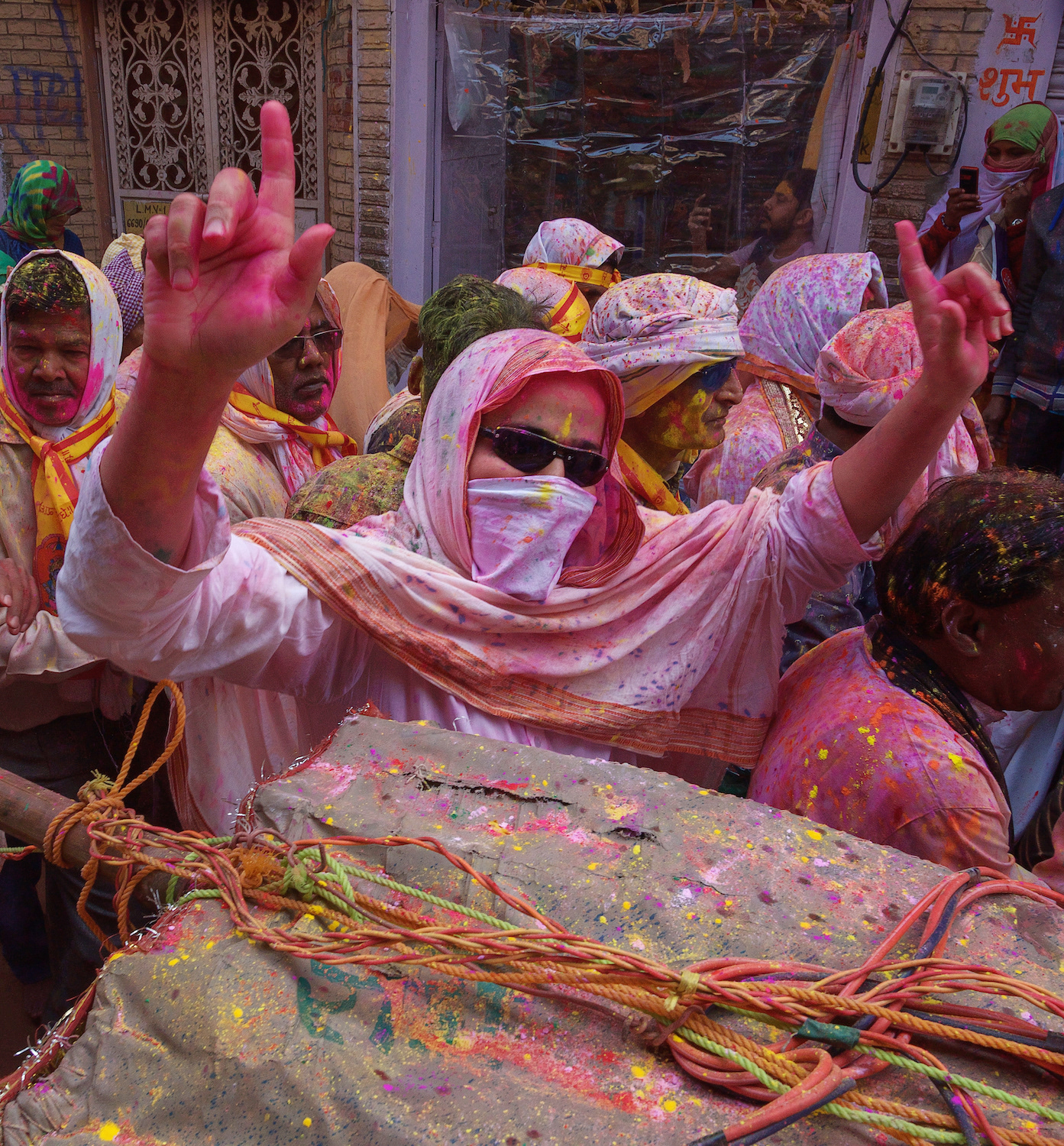
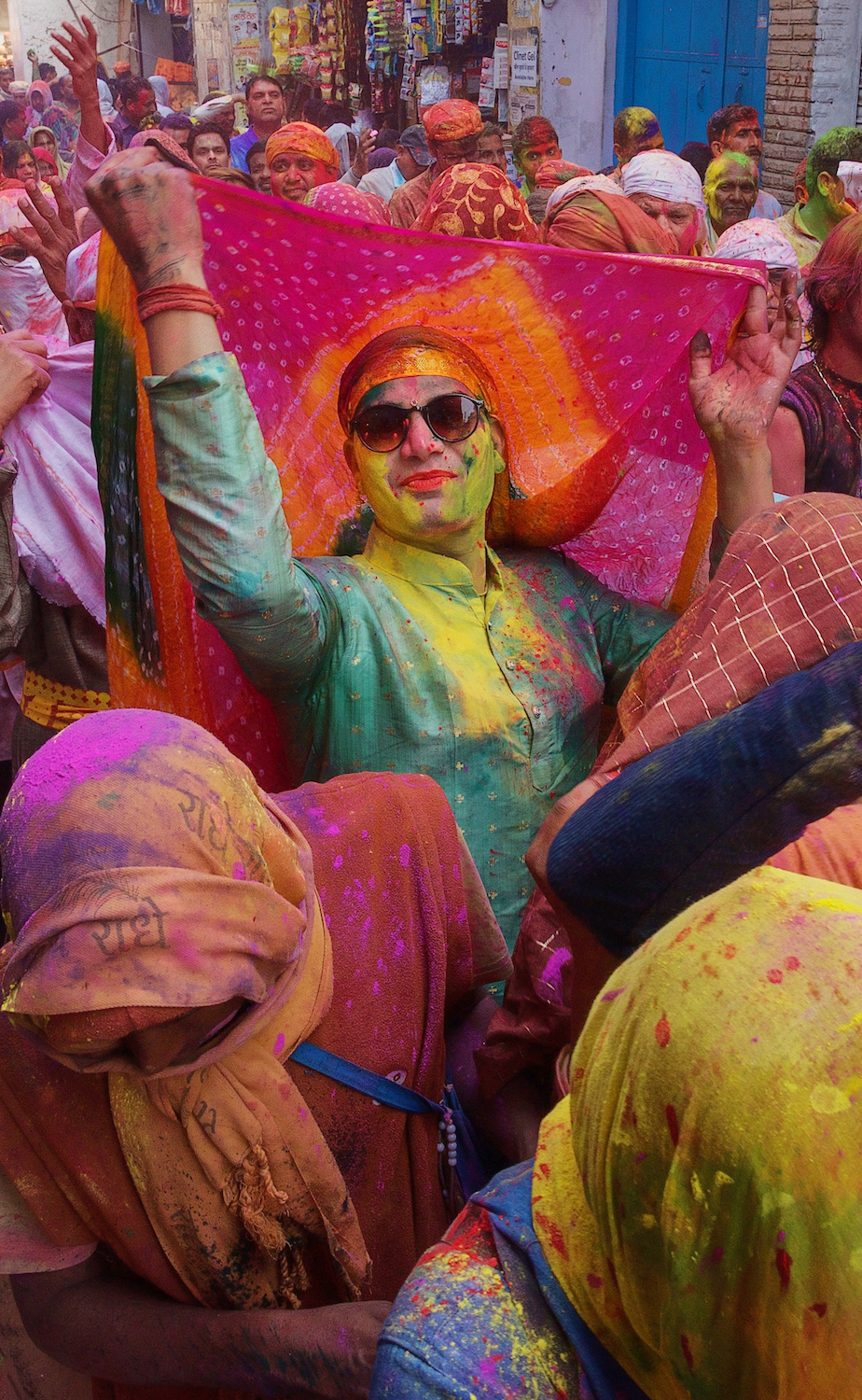
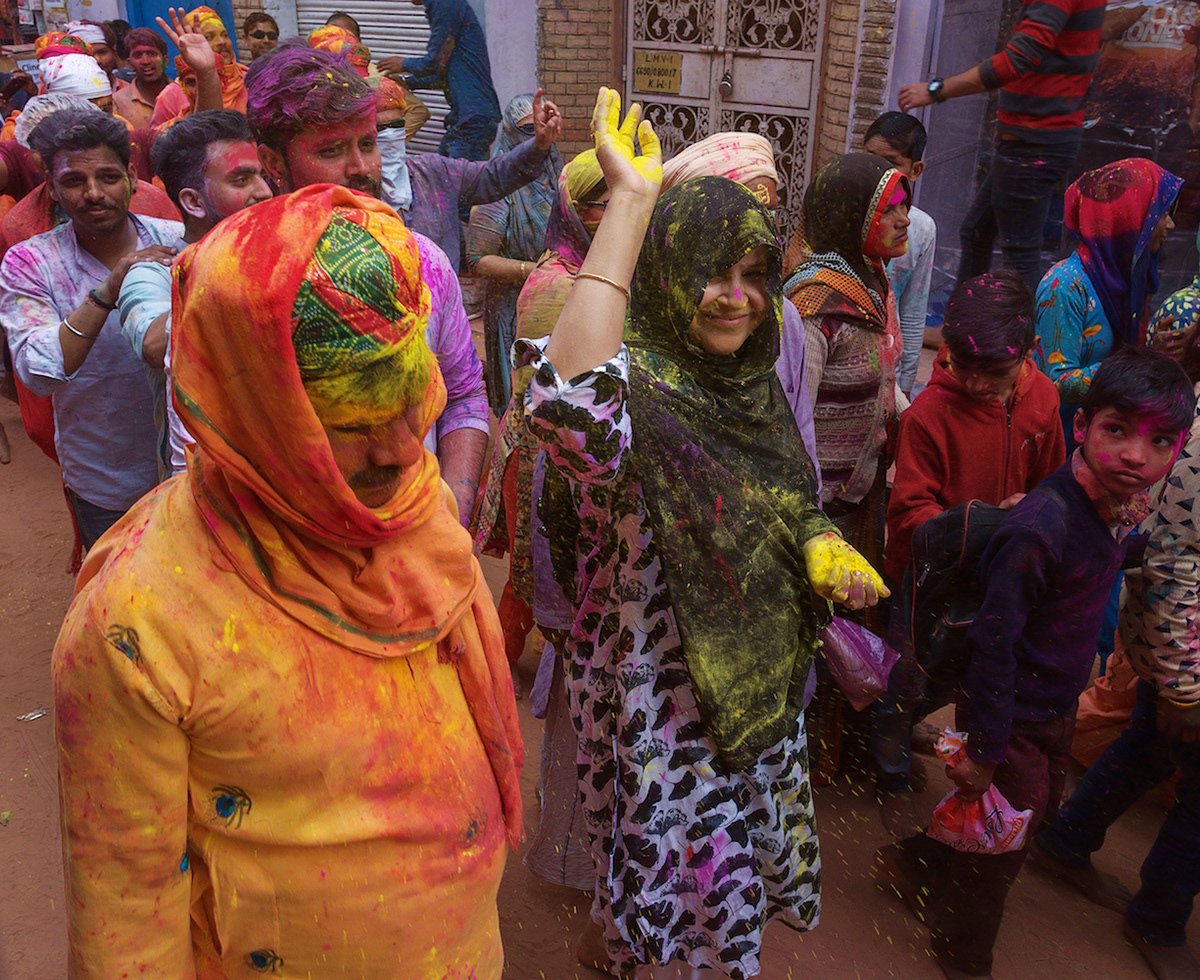
The colourful crowds fill the streets of Barsana making their way to the temple.
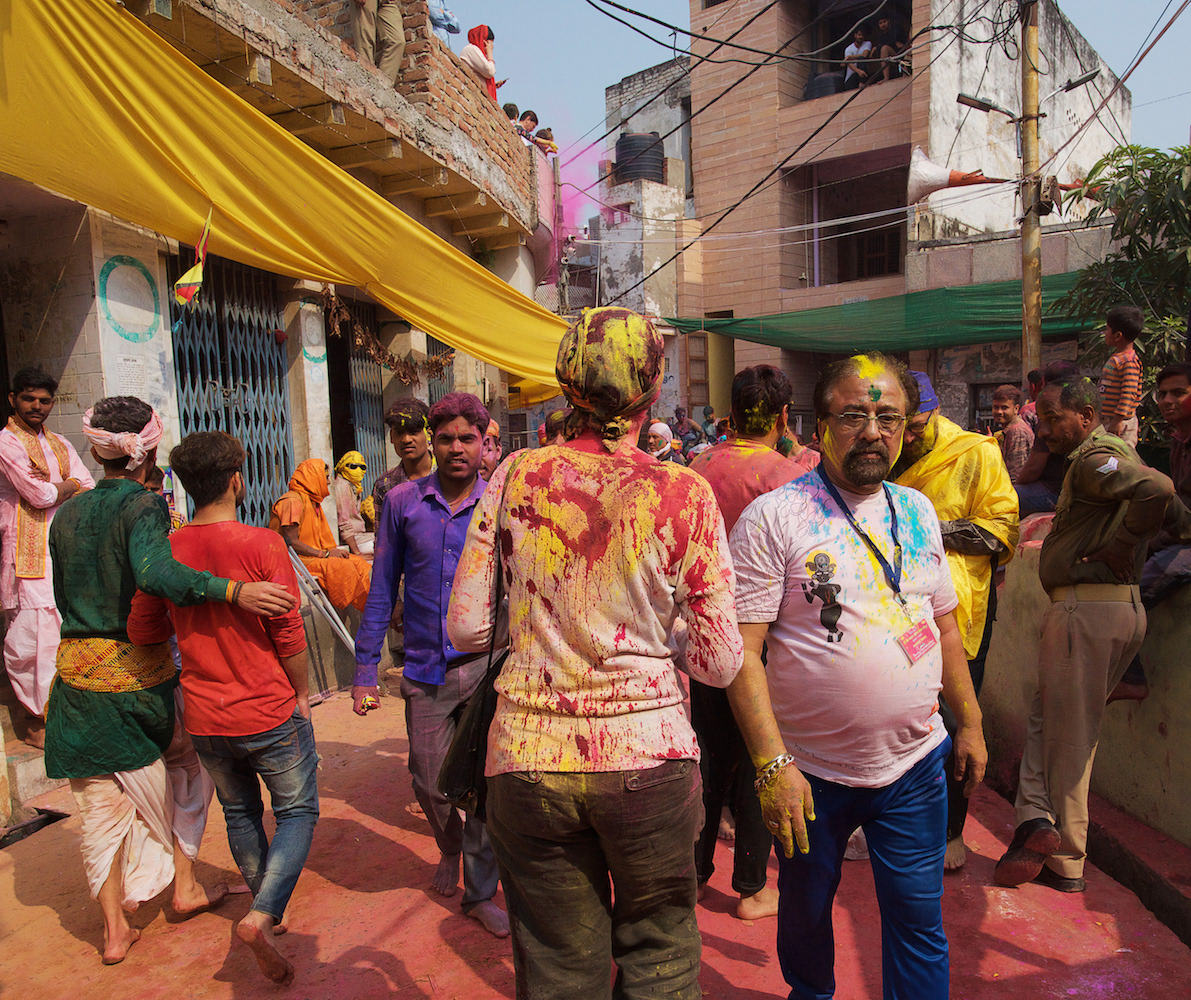

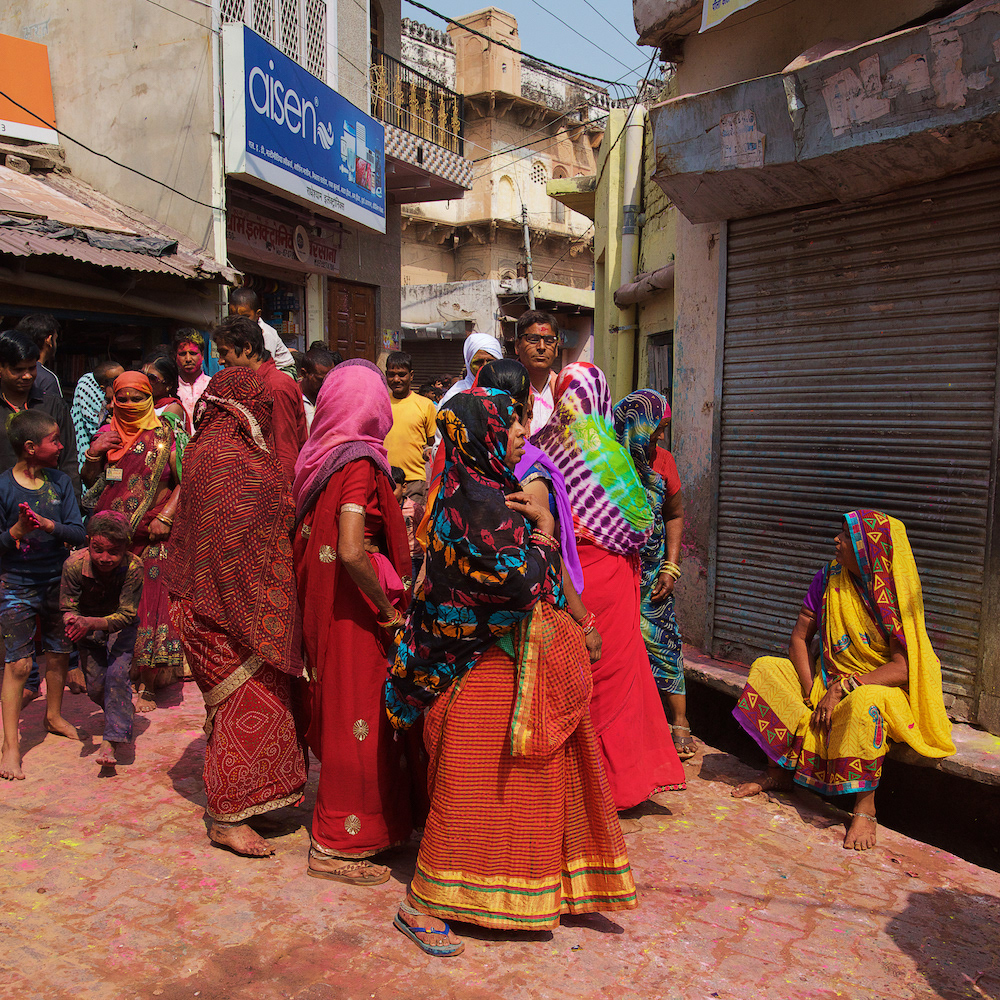
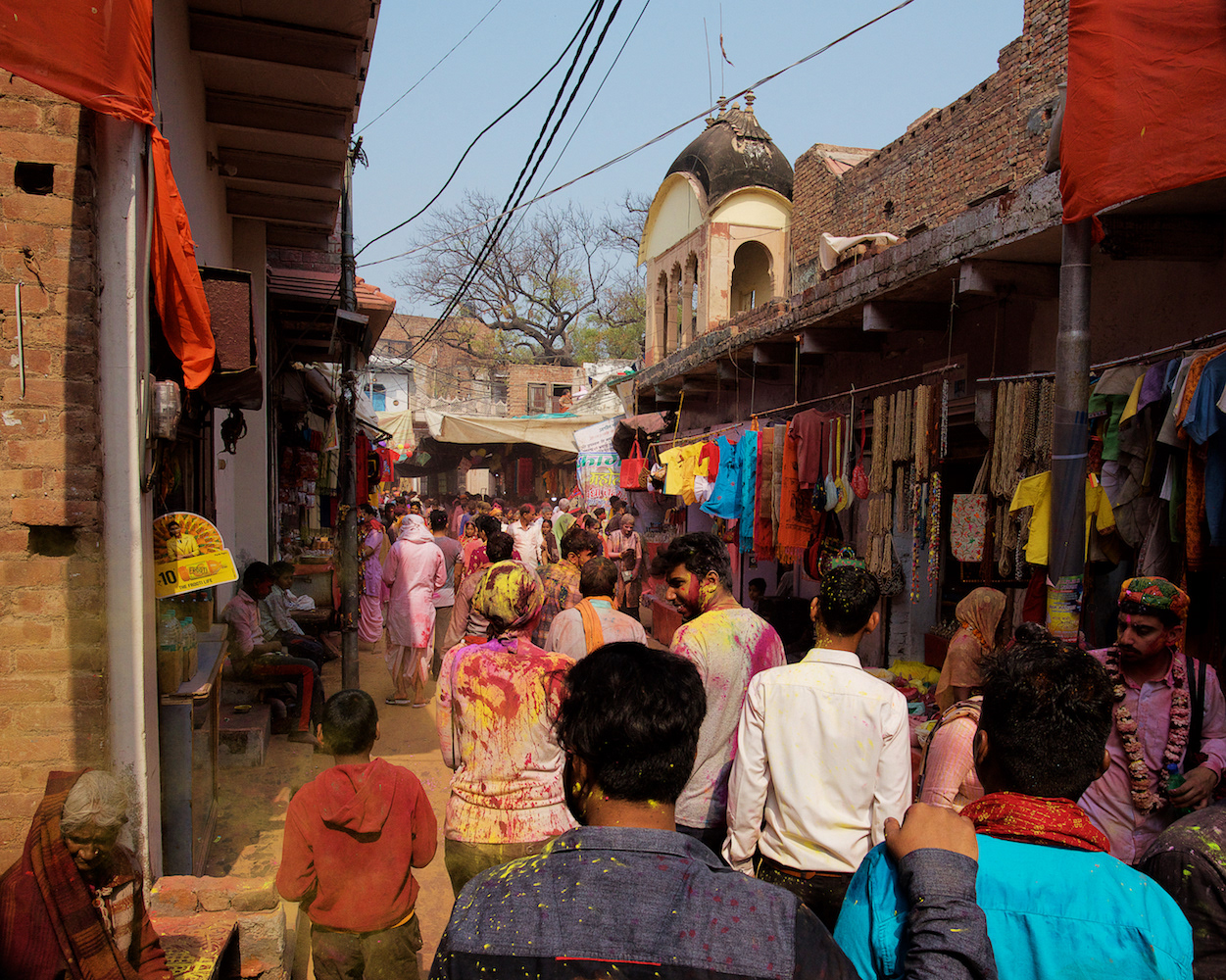
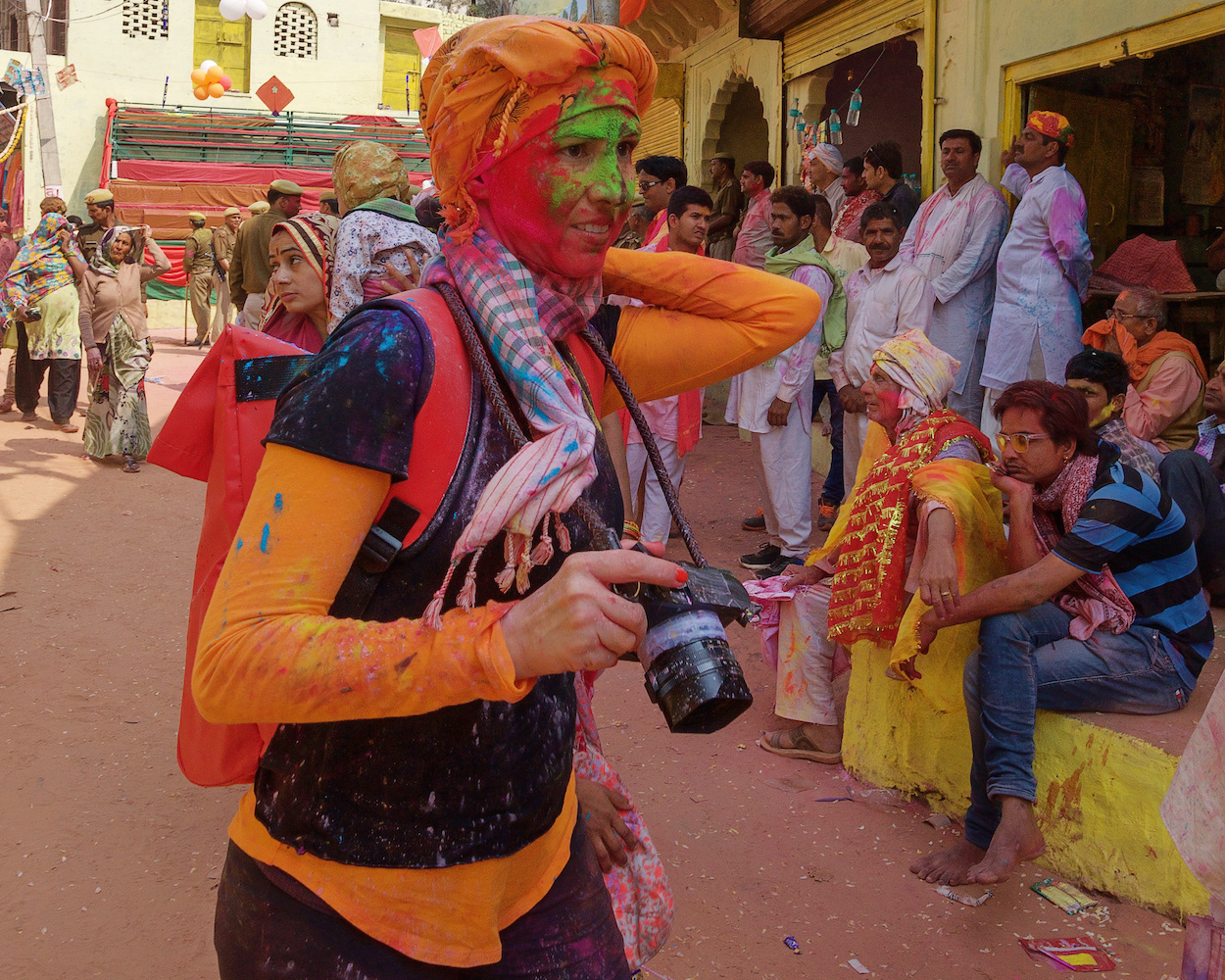
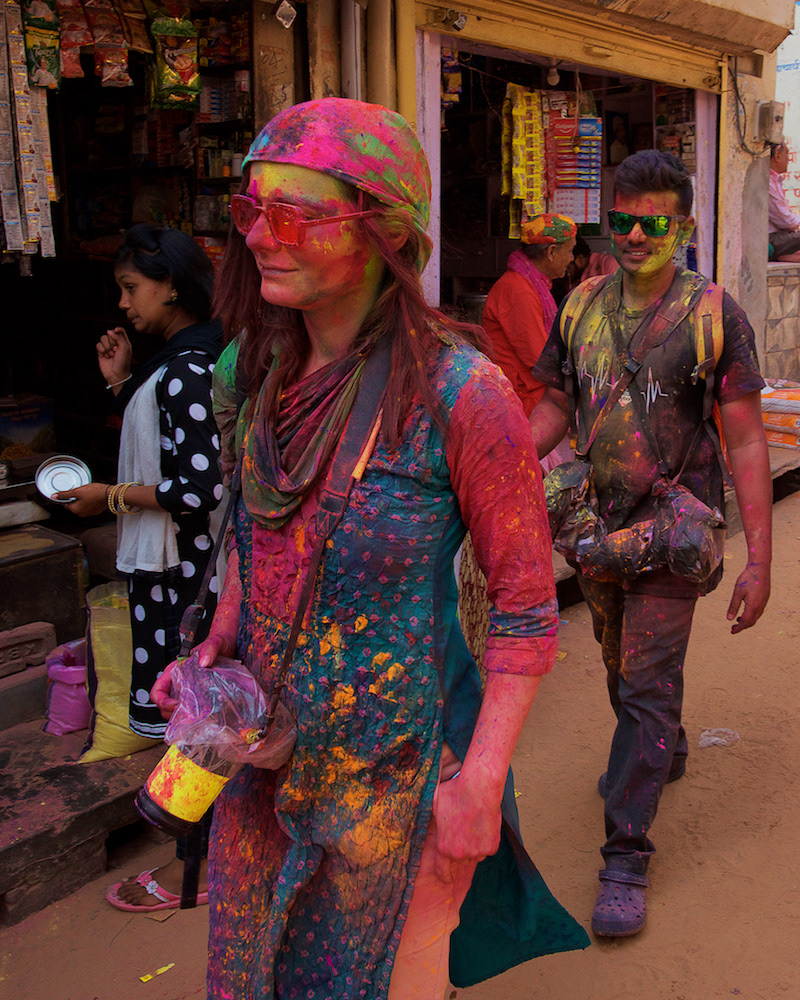

The crowds jostle their way through the narrow streets towards the Shri Radha Rani Temple for the main celebrations of the day.
The chosen weapon of the day is the pichkari (water gun)!



A photographer with his camera covered in plastic, which is essential to shield it from all the powder and water being thrown around.
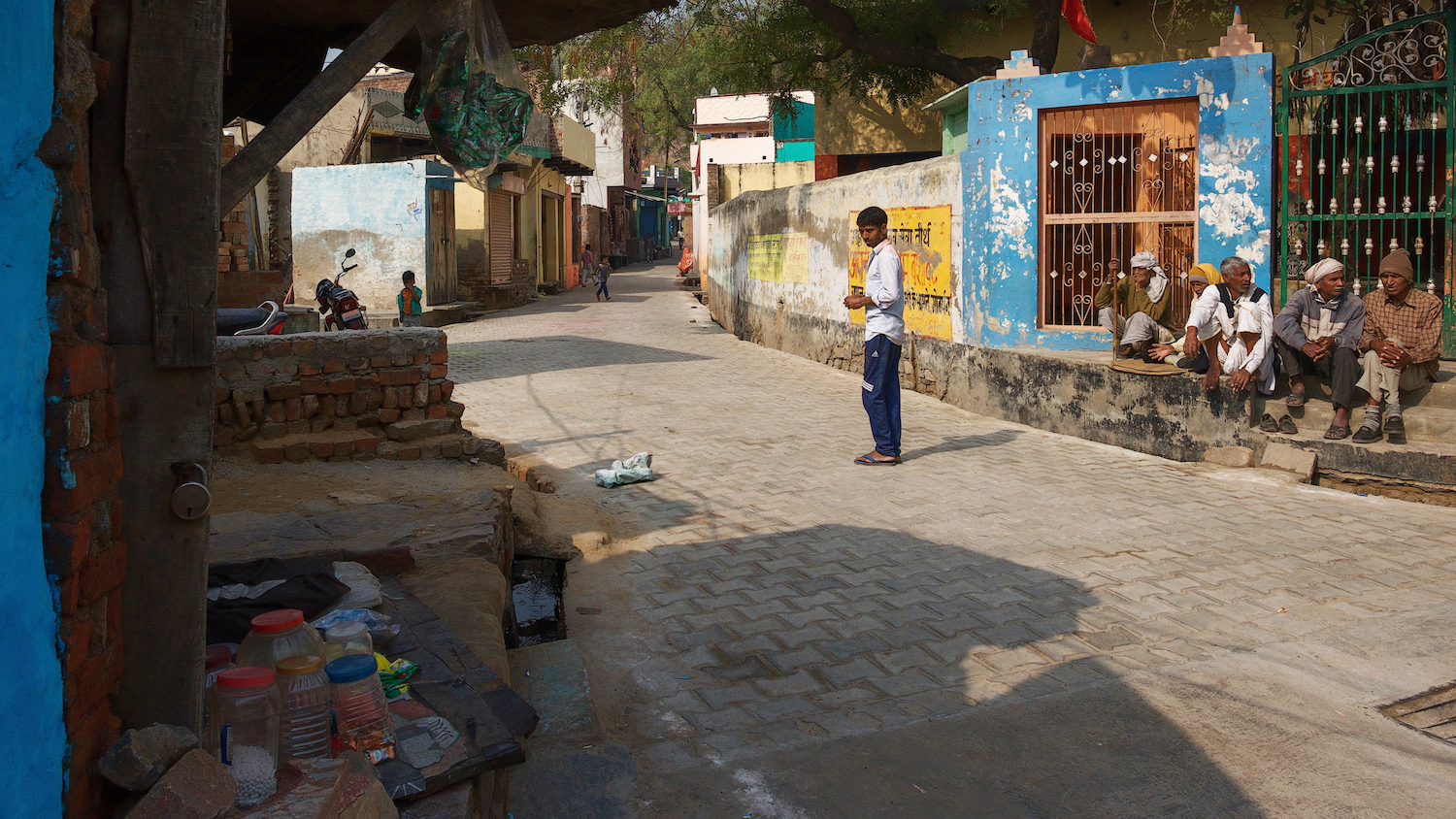
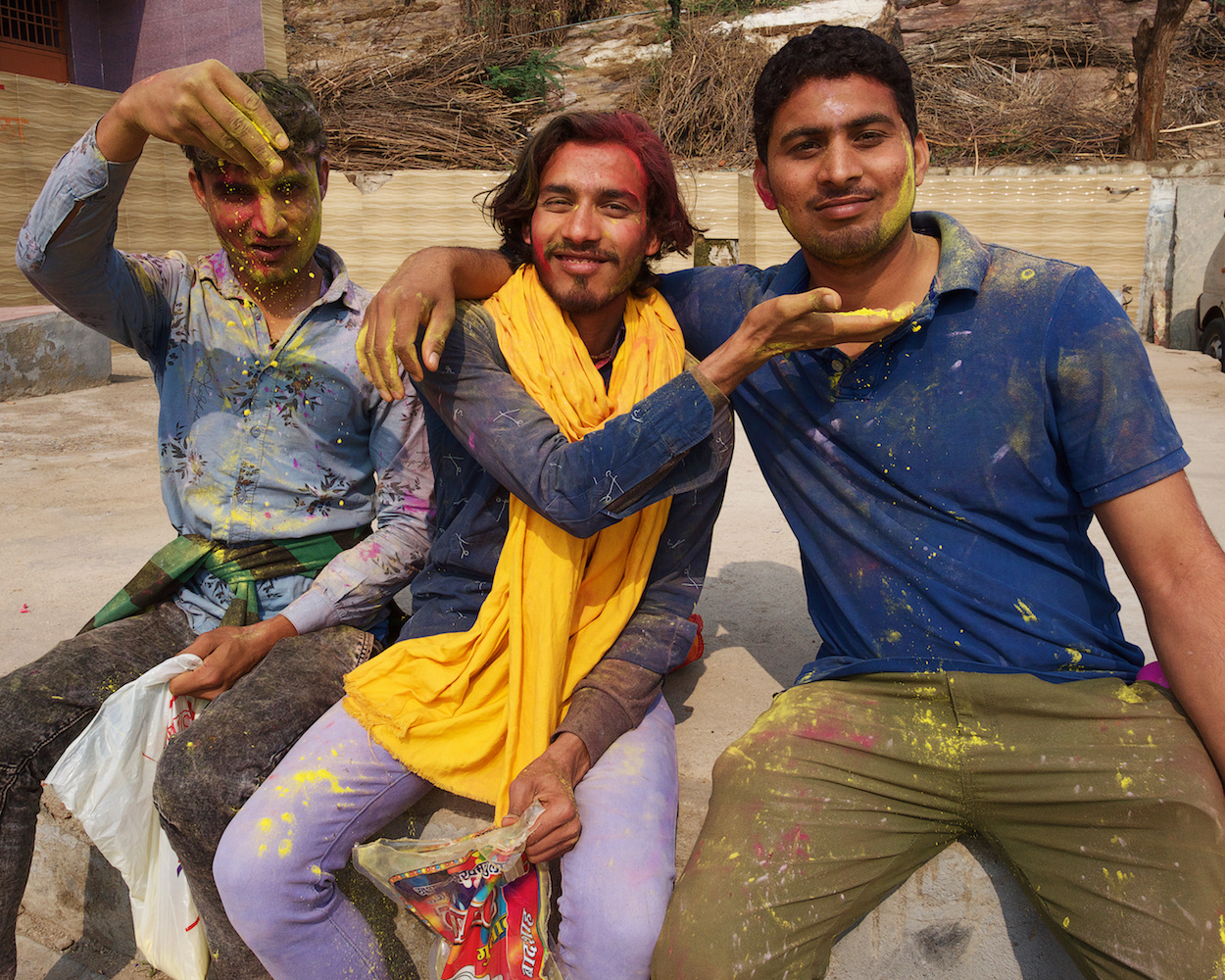
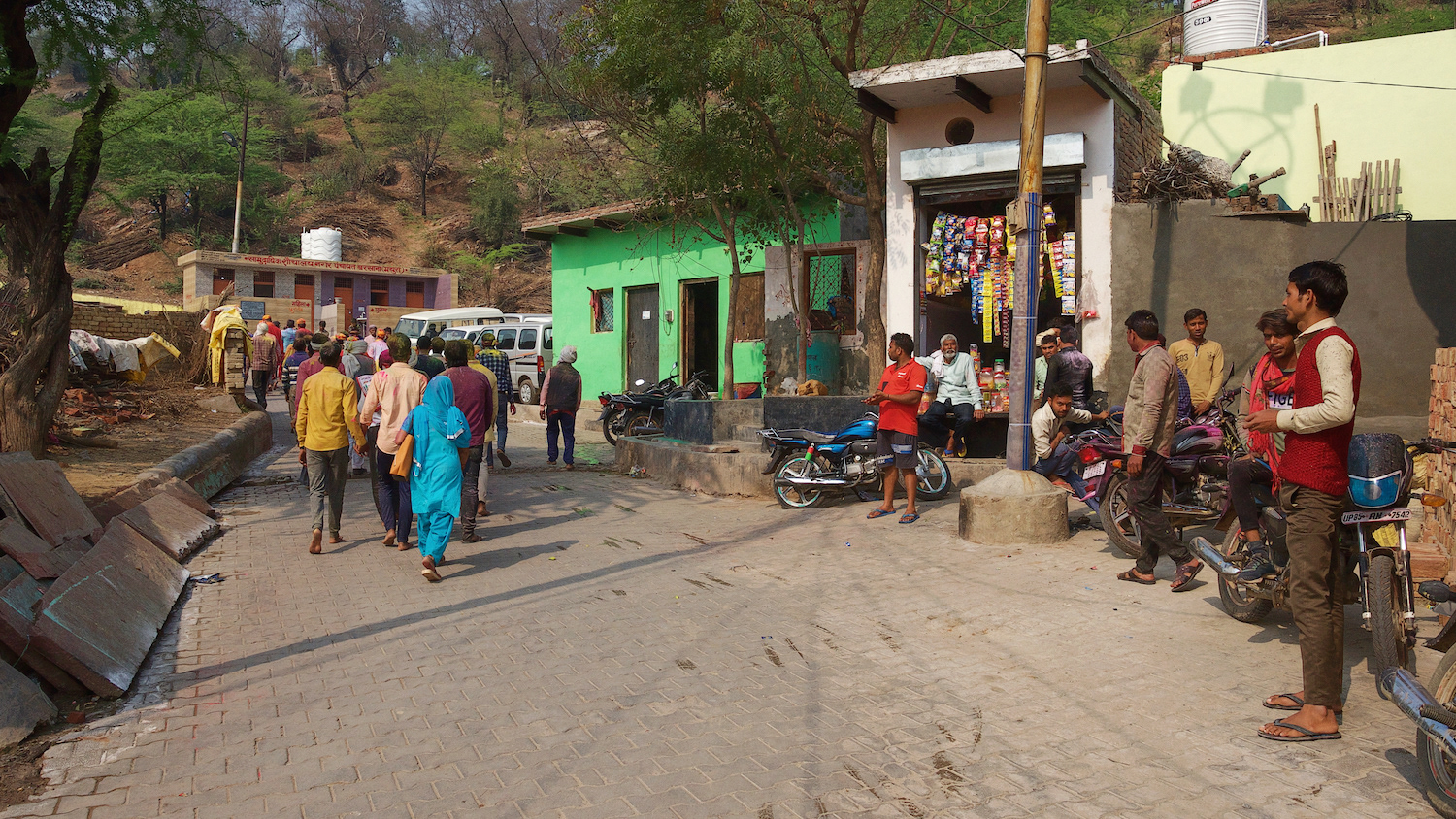
In an attempt to avoid the chaos and crowds making their way to the Temple, we took a quieter route through the town. Even in these streets there was colour everywhere.

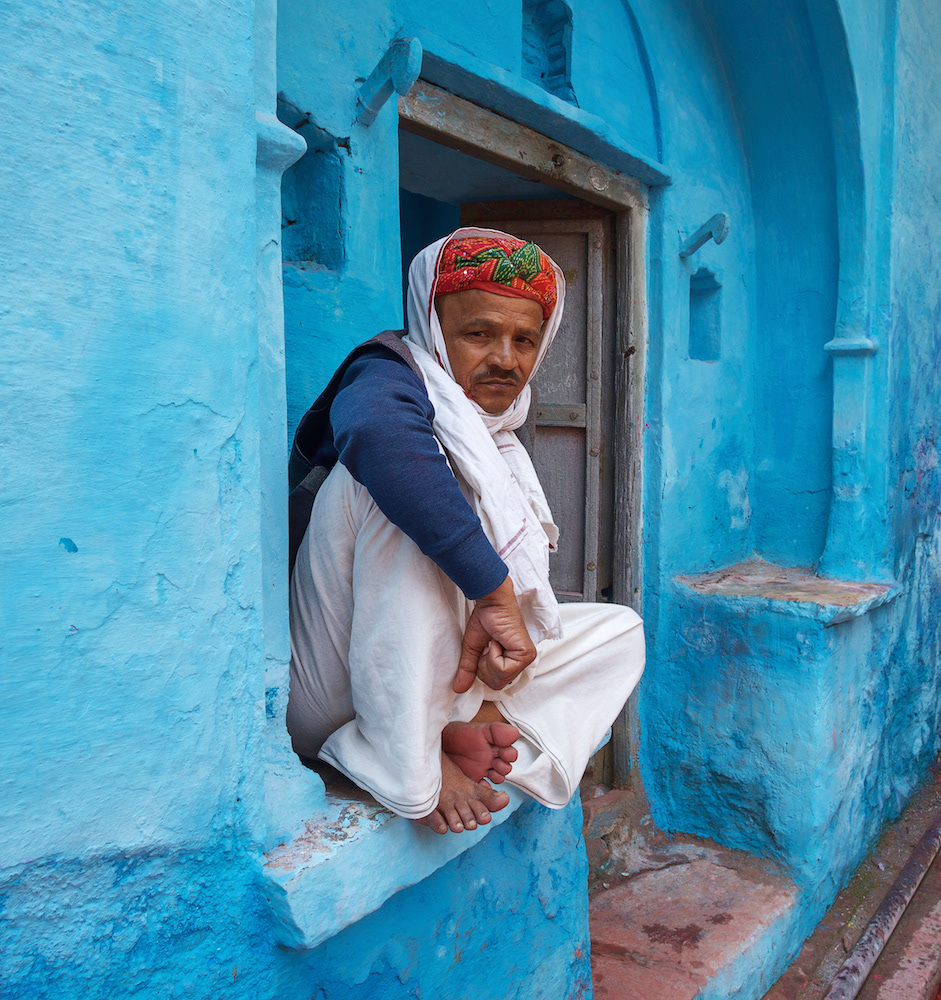
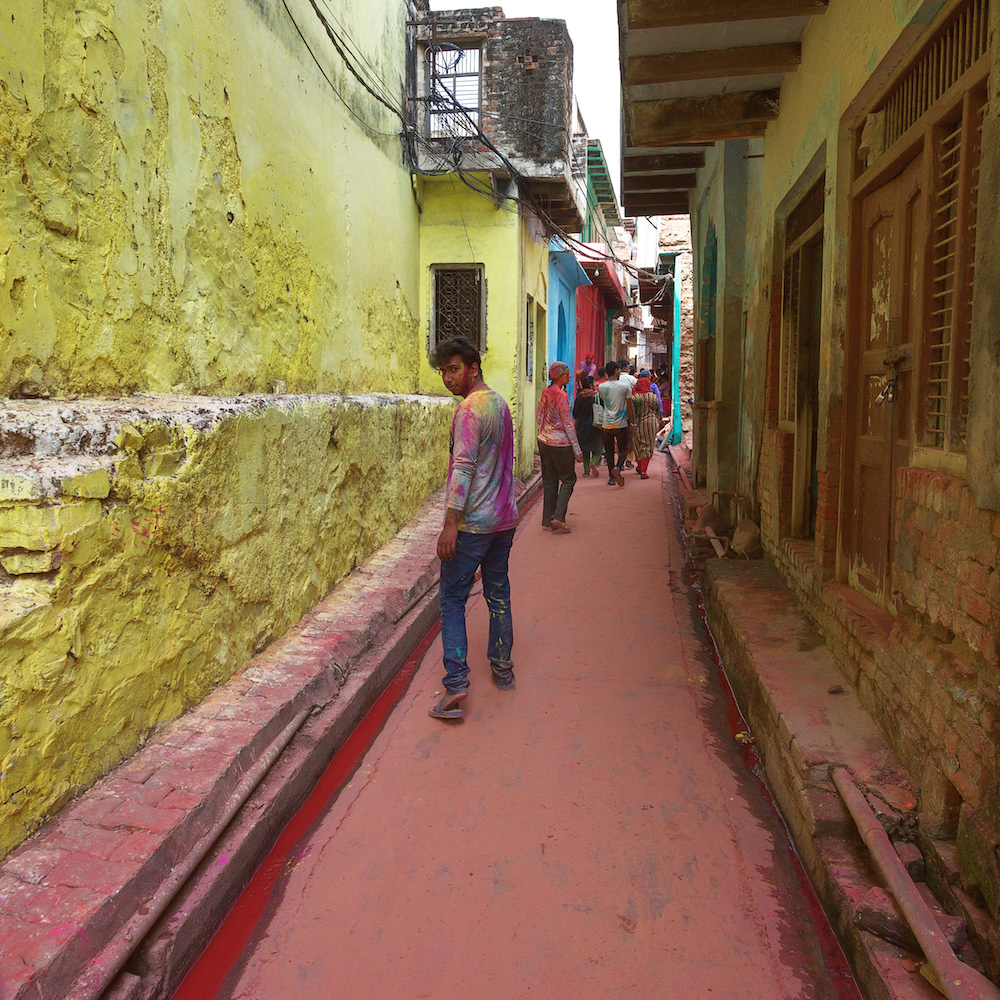
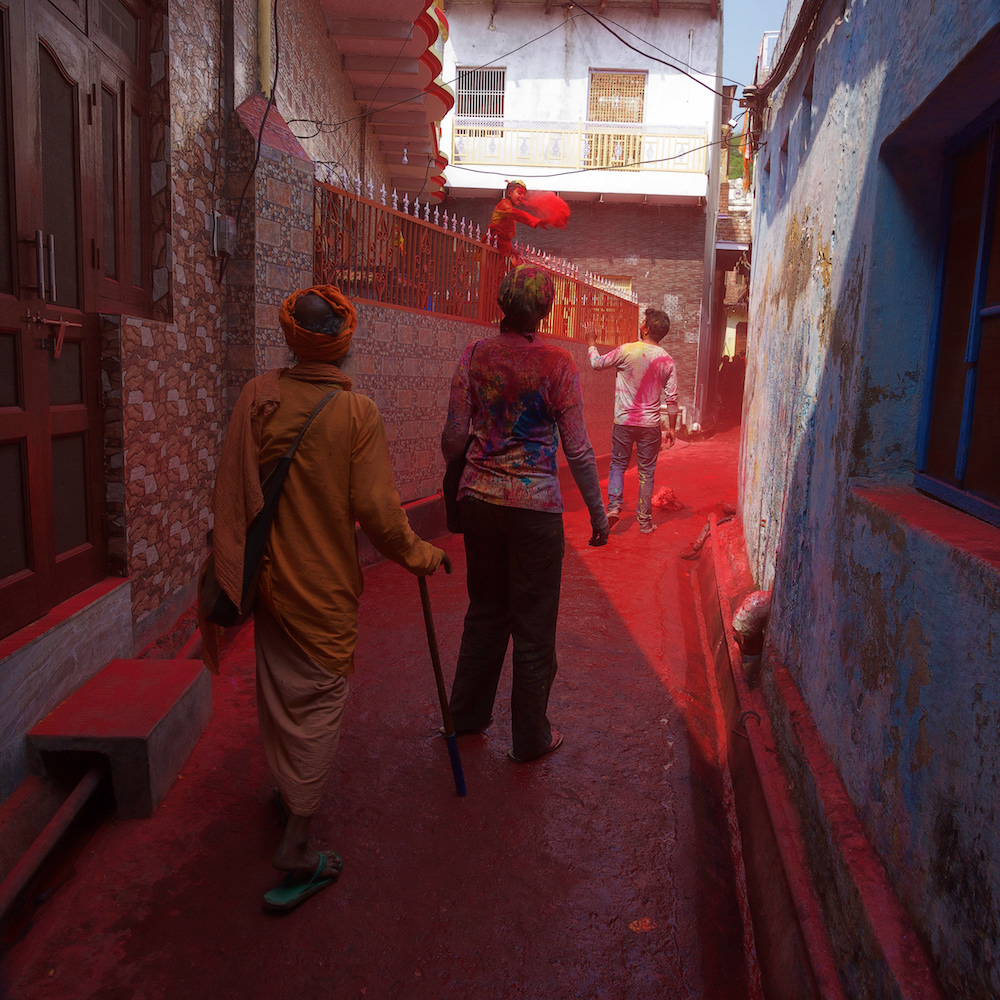

However, there was no escape from attack even down these back streets. Puru bravely goes ahead and takes a bagful of red powder, whilst Anne runs past!!
Shri Radha Rani Temple
This Hindu temple is dedicated to Radha, the Hindu Goddess and consort of the Hindu God Krishna. It's one of the oldest temples in Barsana and was built under the reign of Emperor Akbar who reigned from 1556 to1605. Its Mughal architecture incorporates beautiful arches and domes.



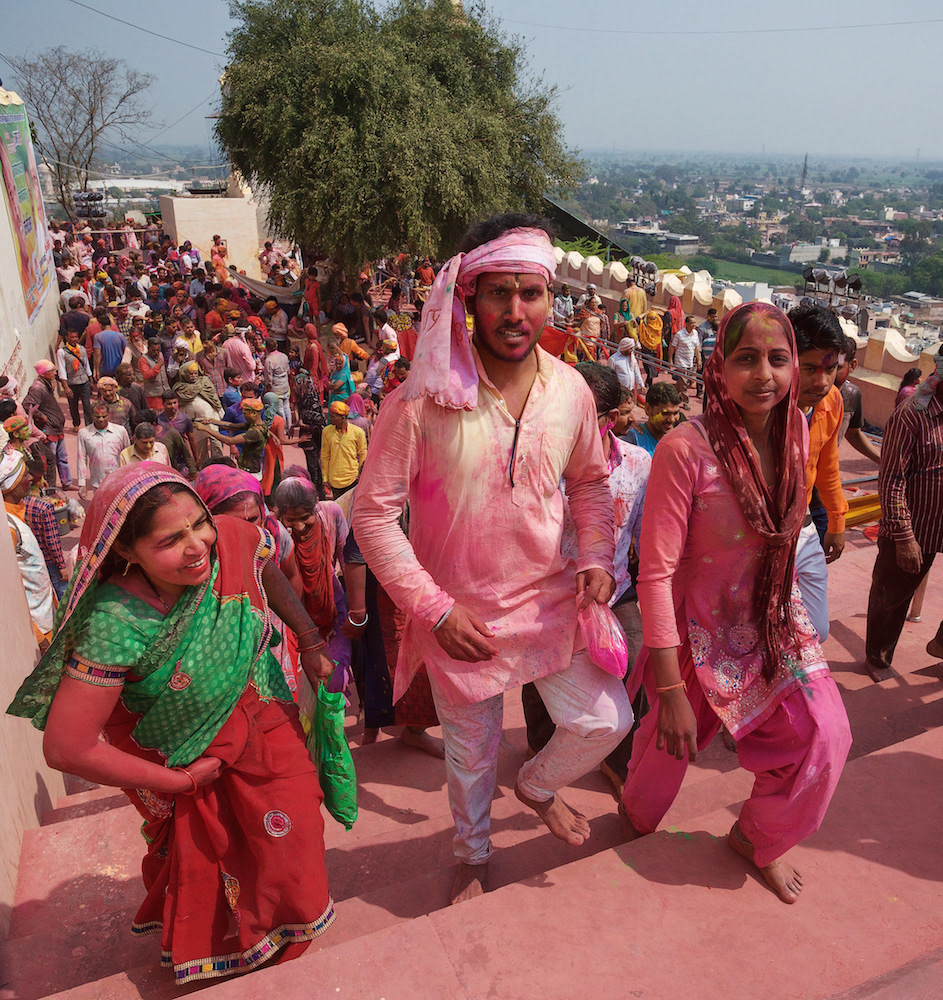
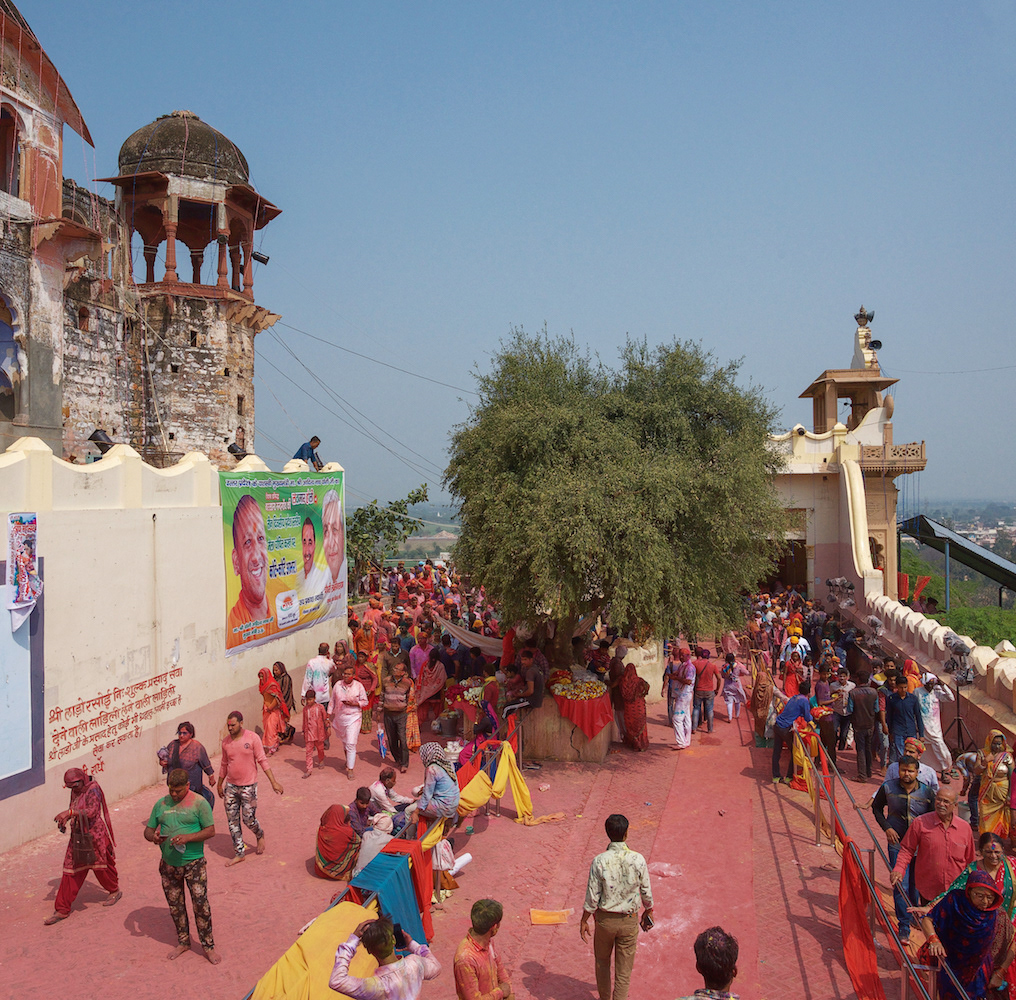
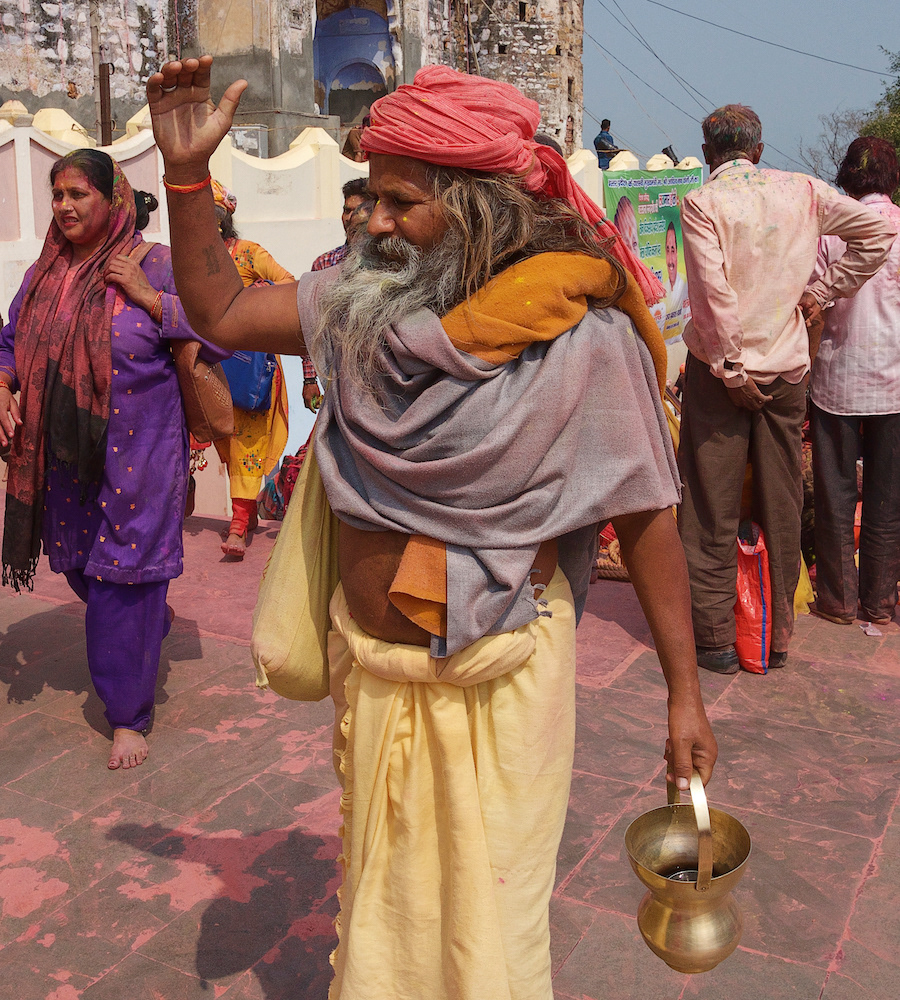
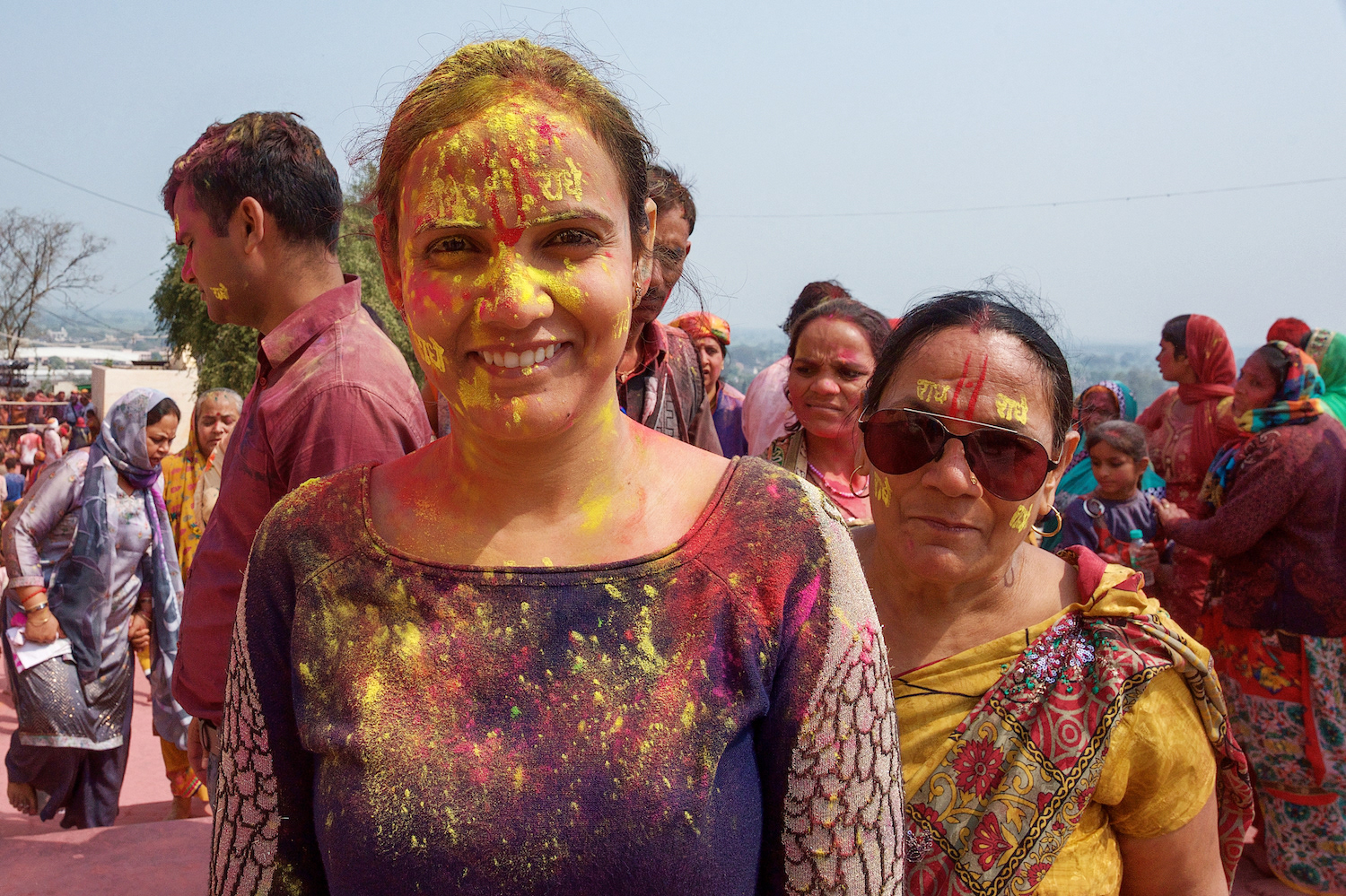



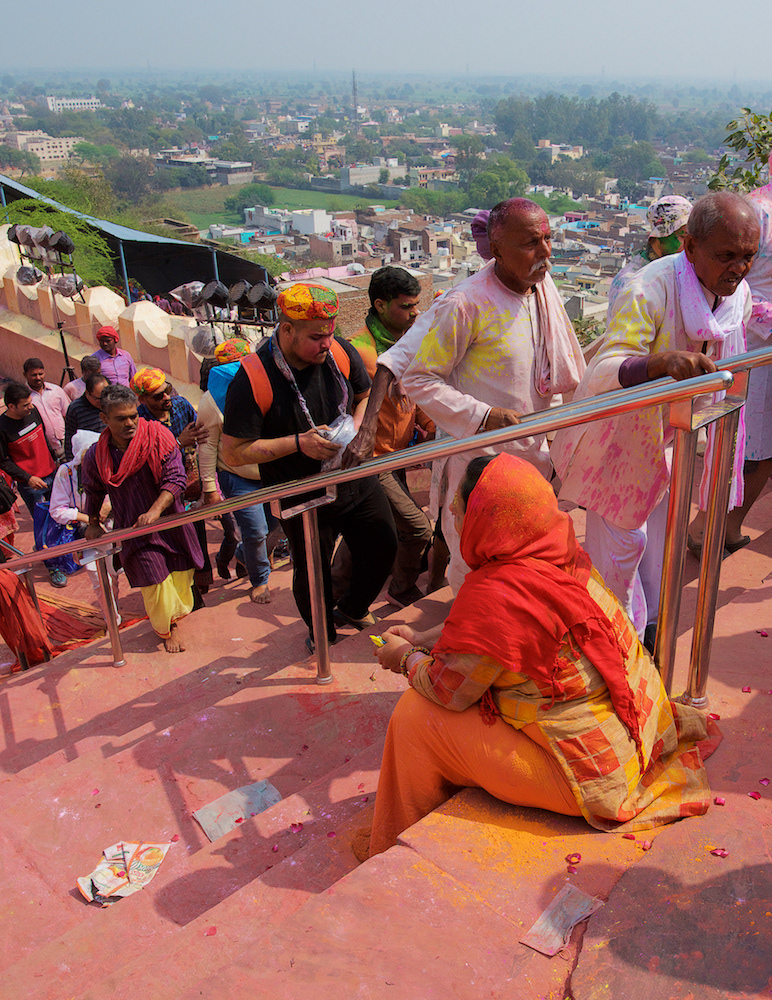

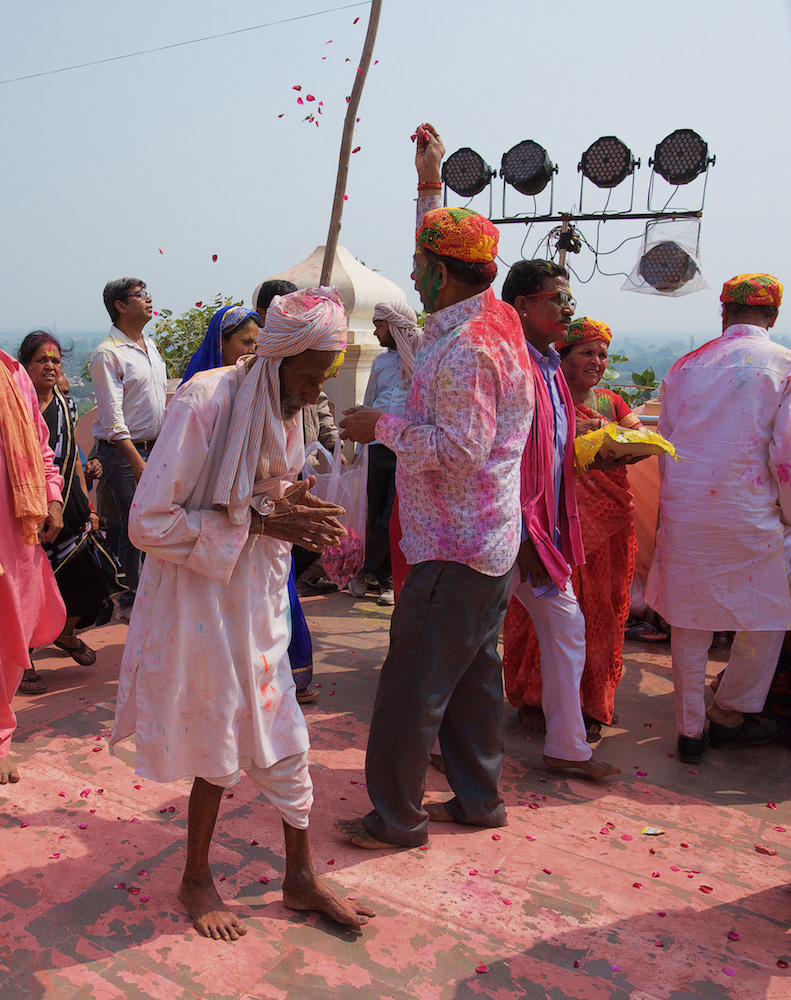


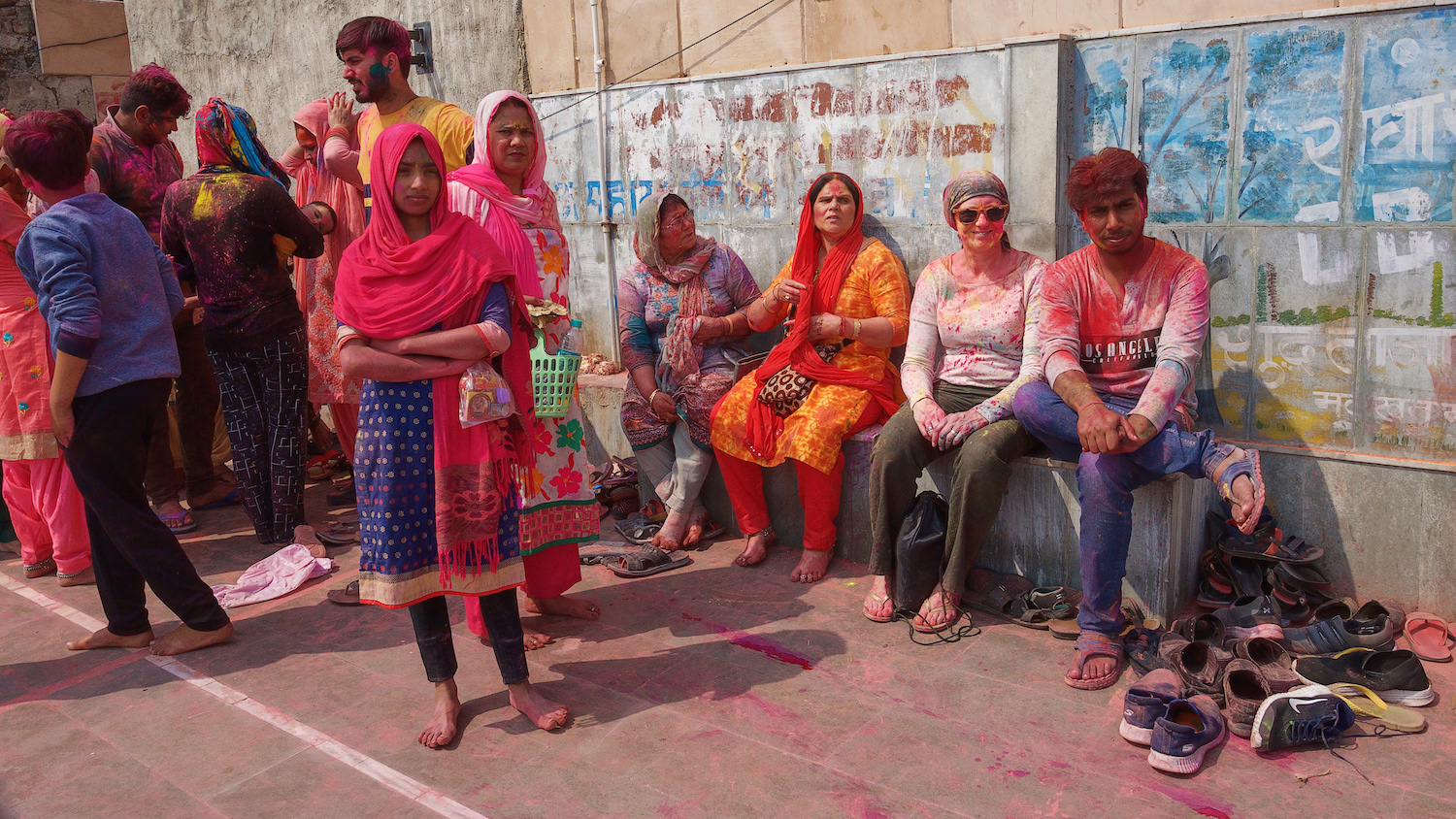
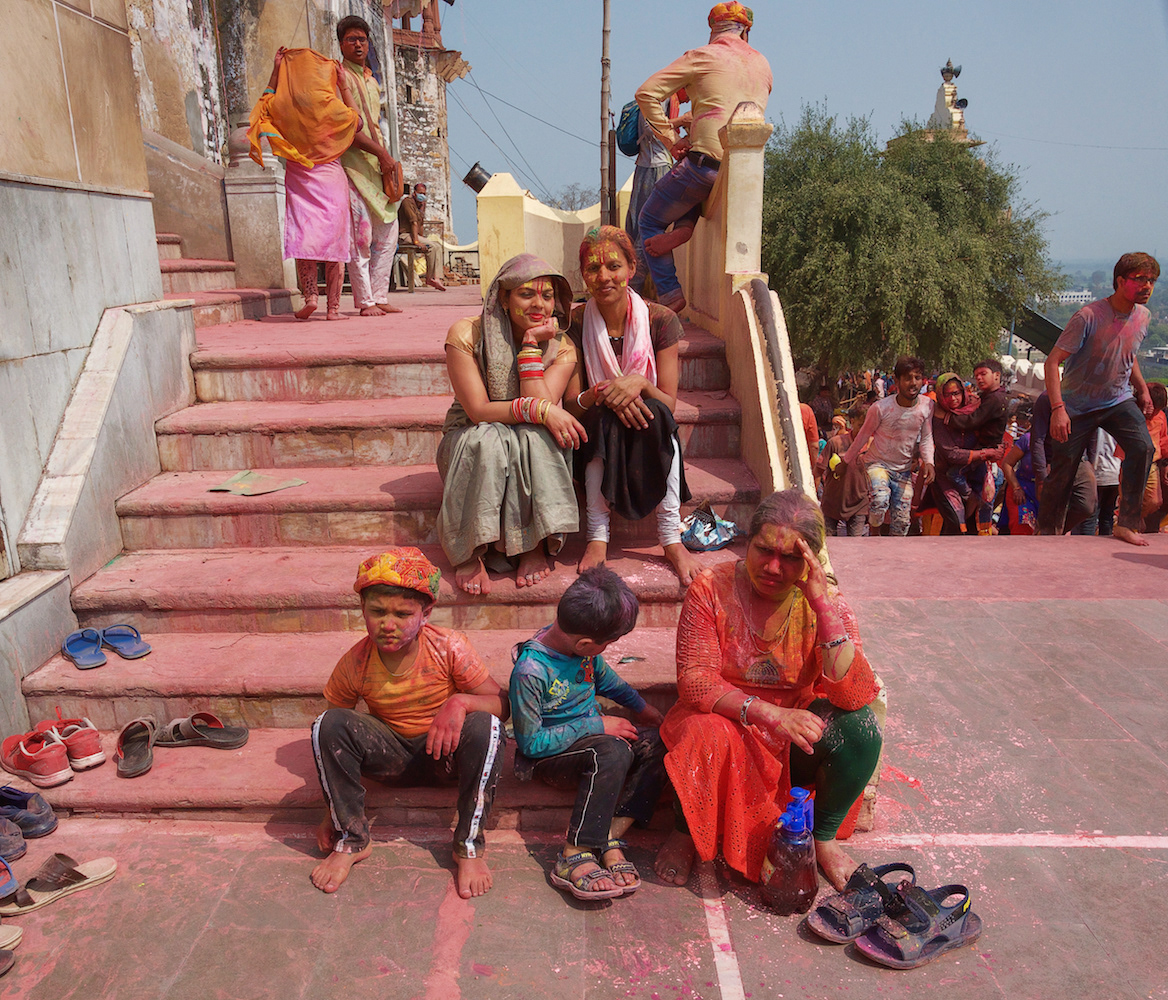

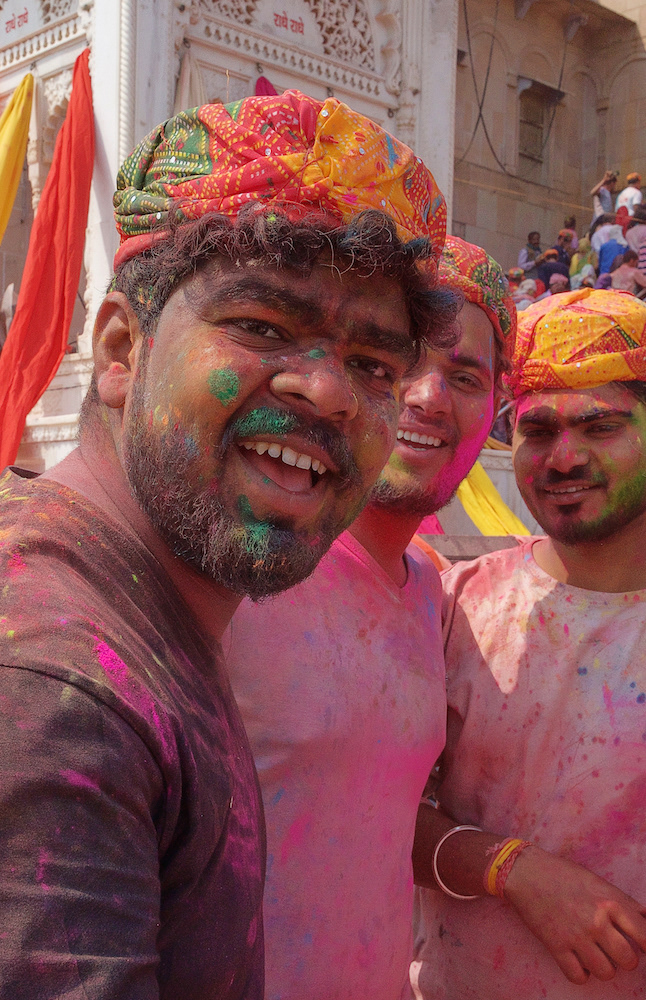
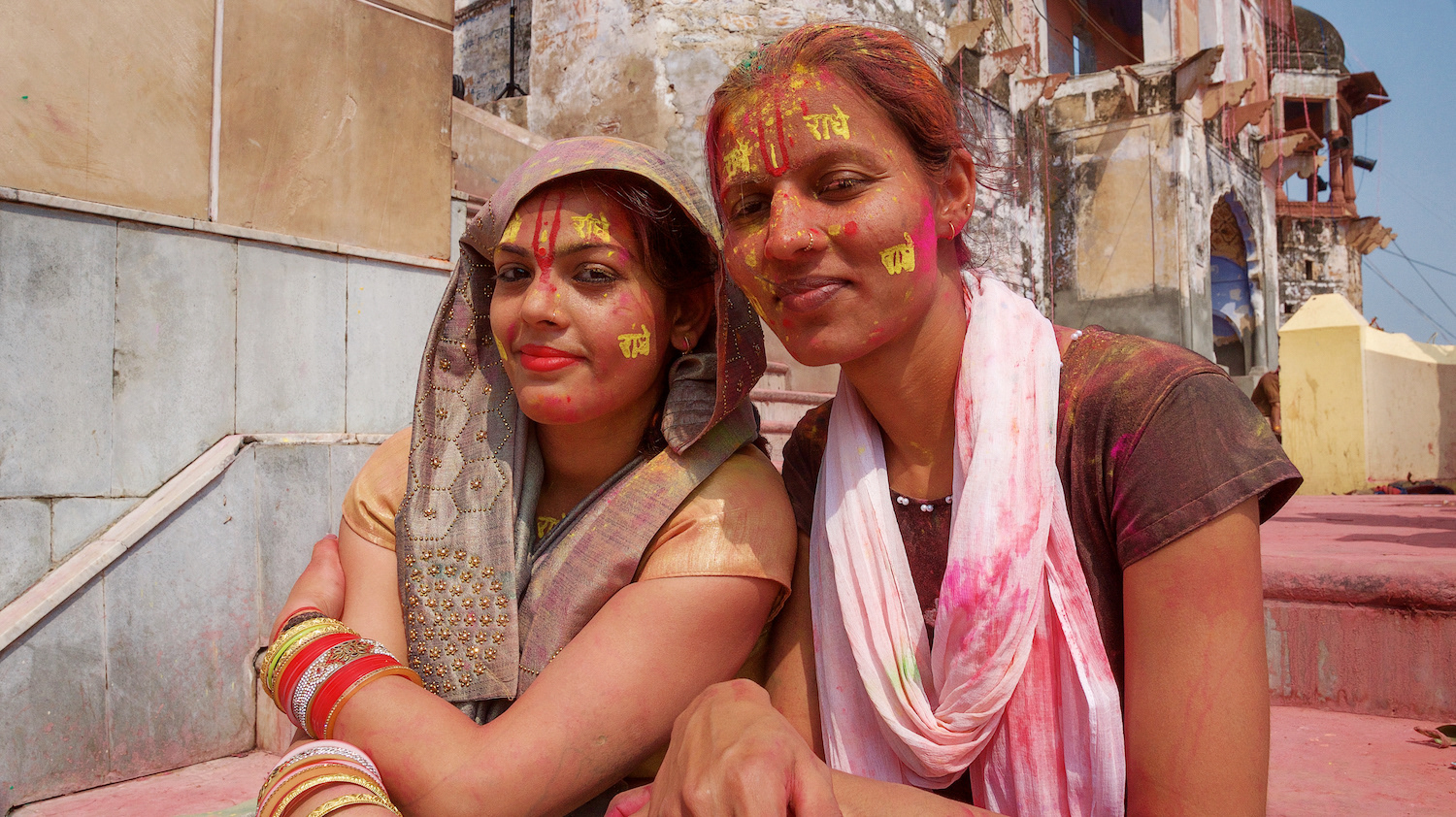
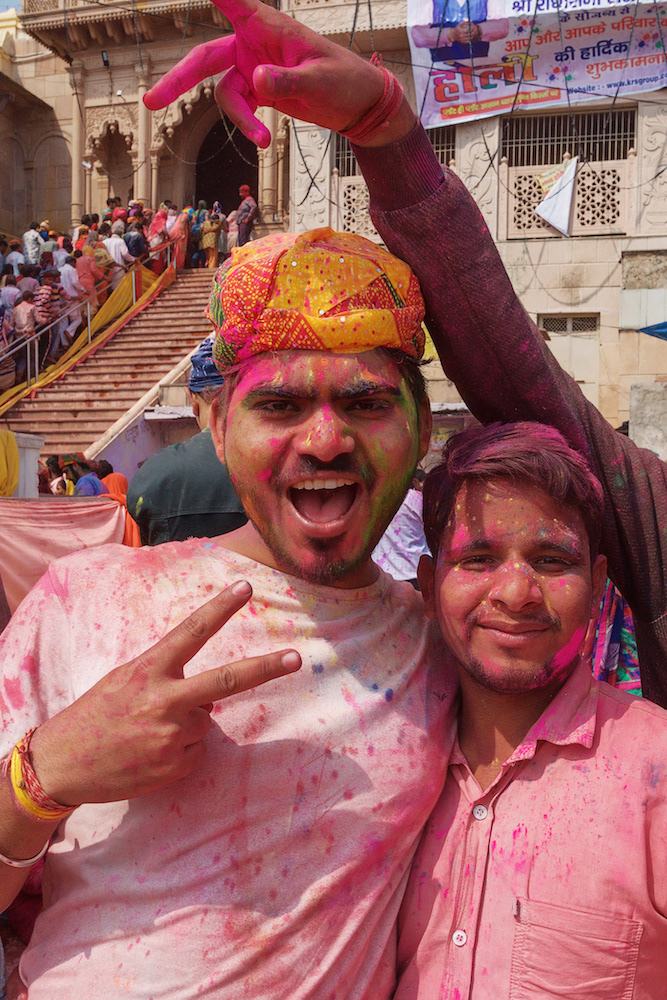
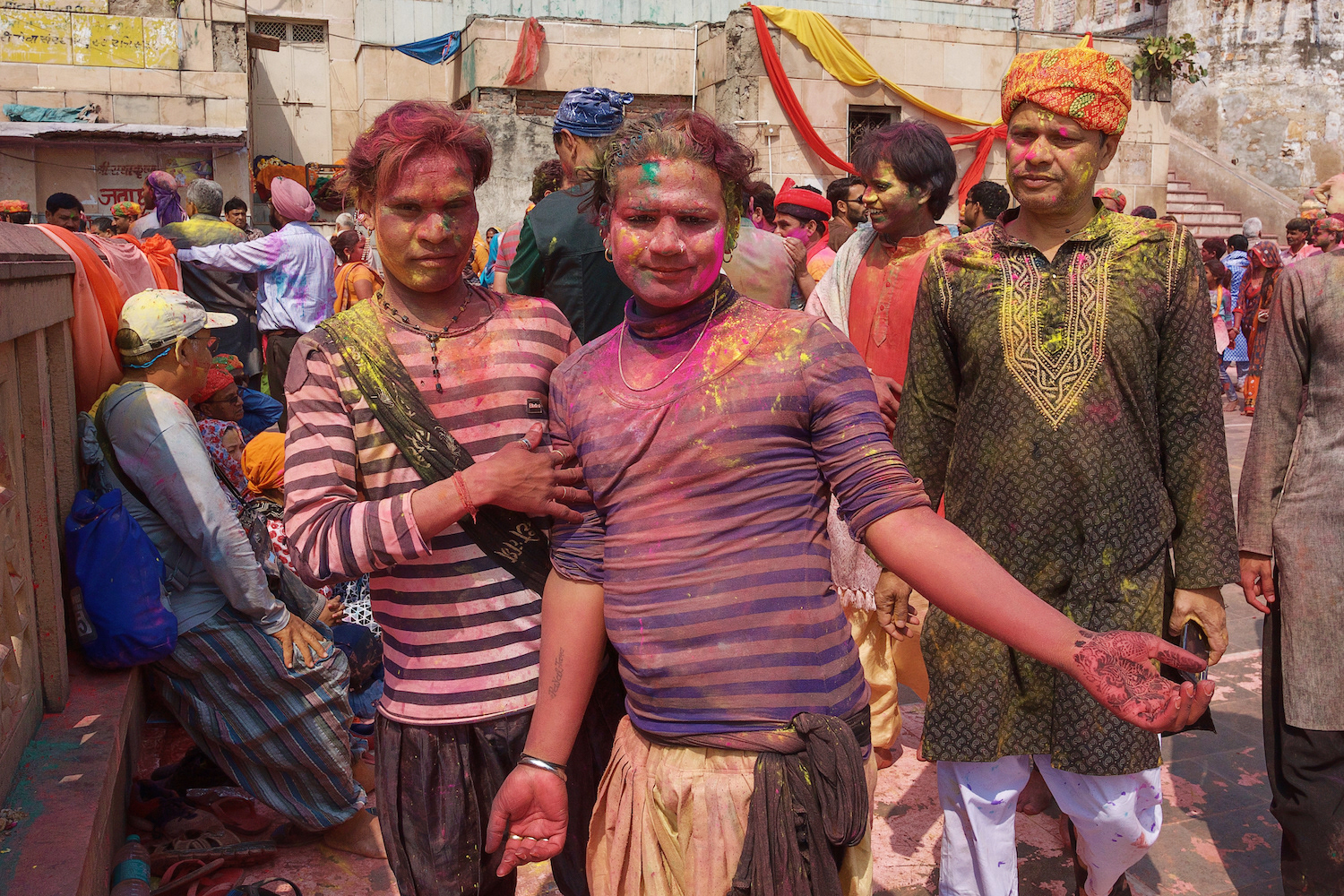

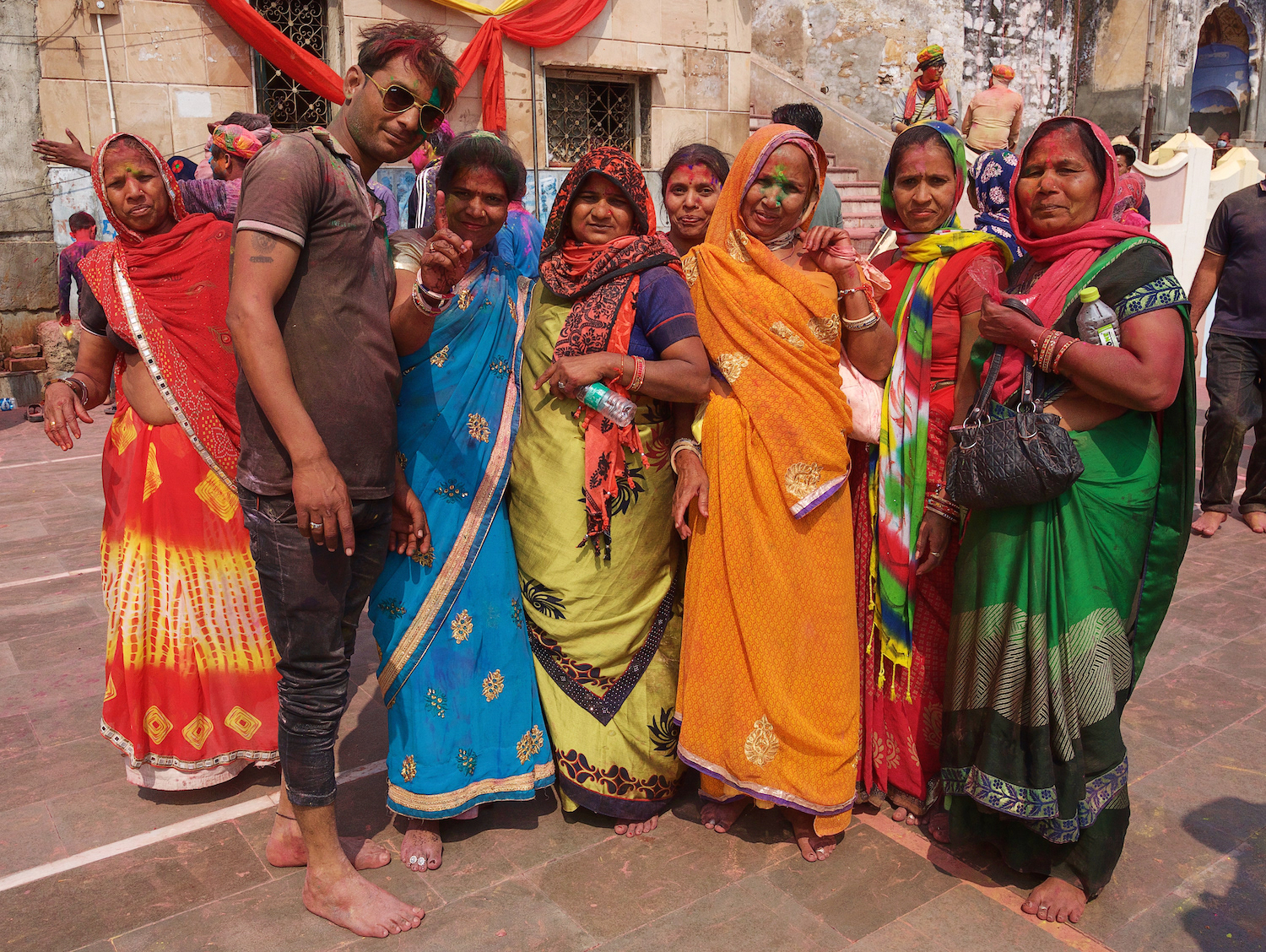
We make our way back down from the Temple to the town.

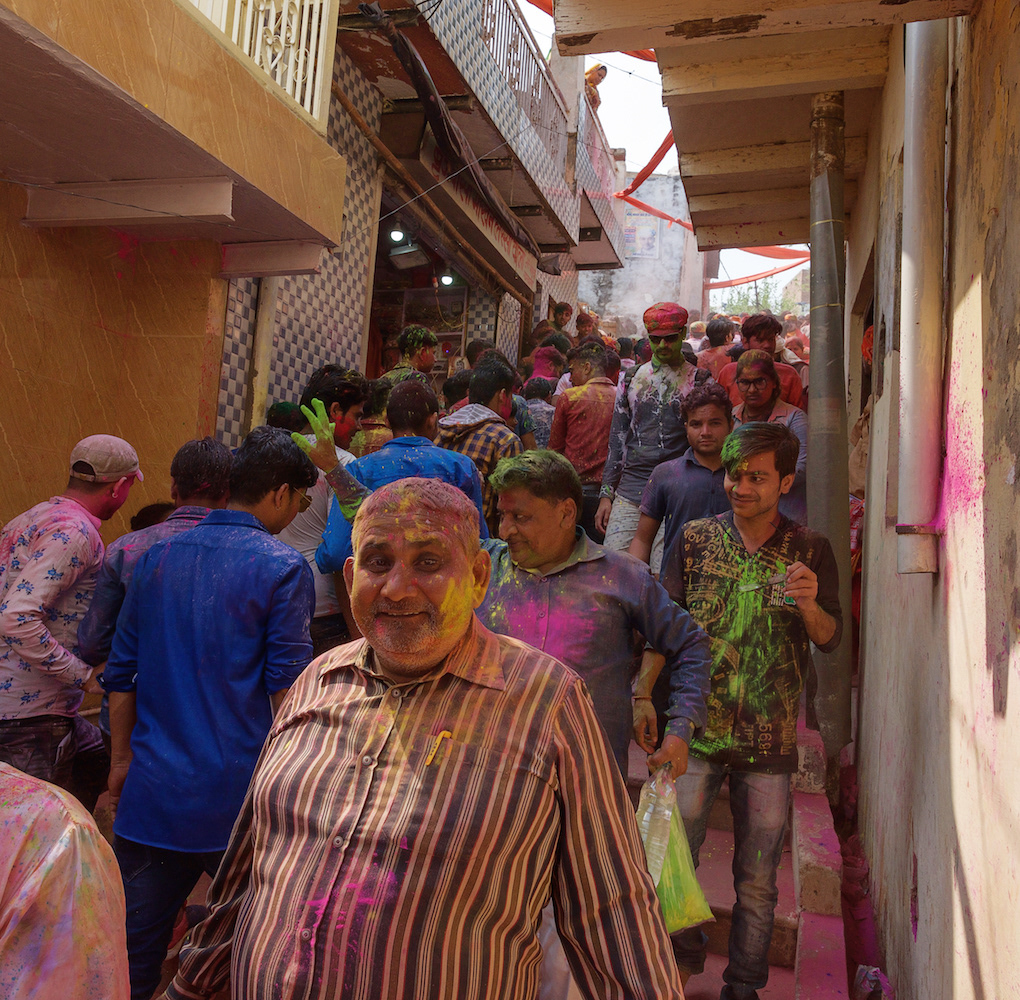
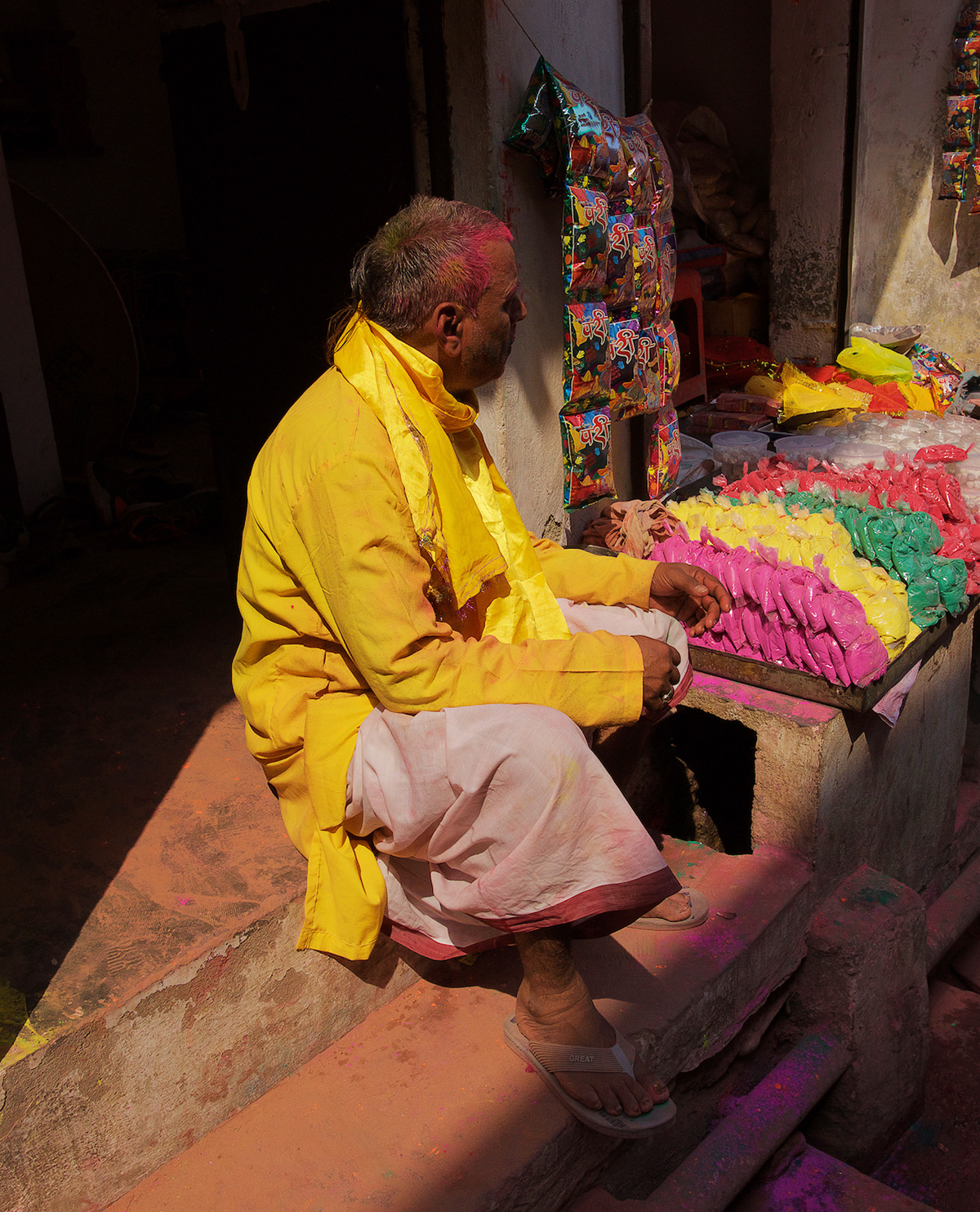
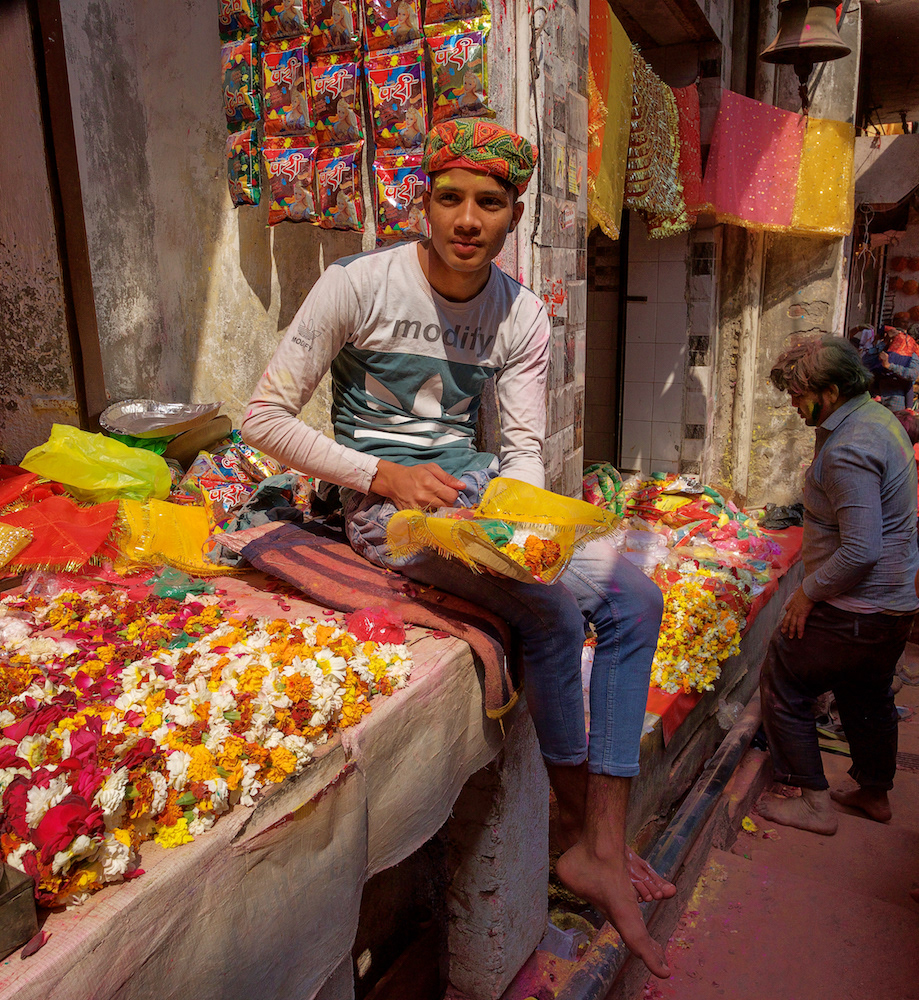
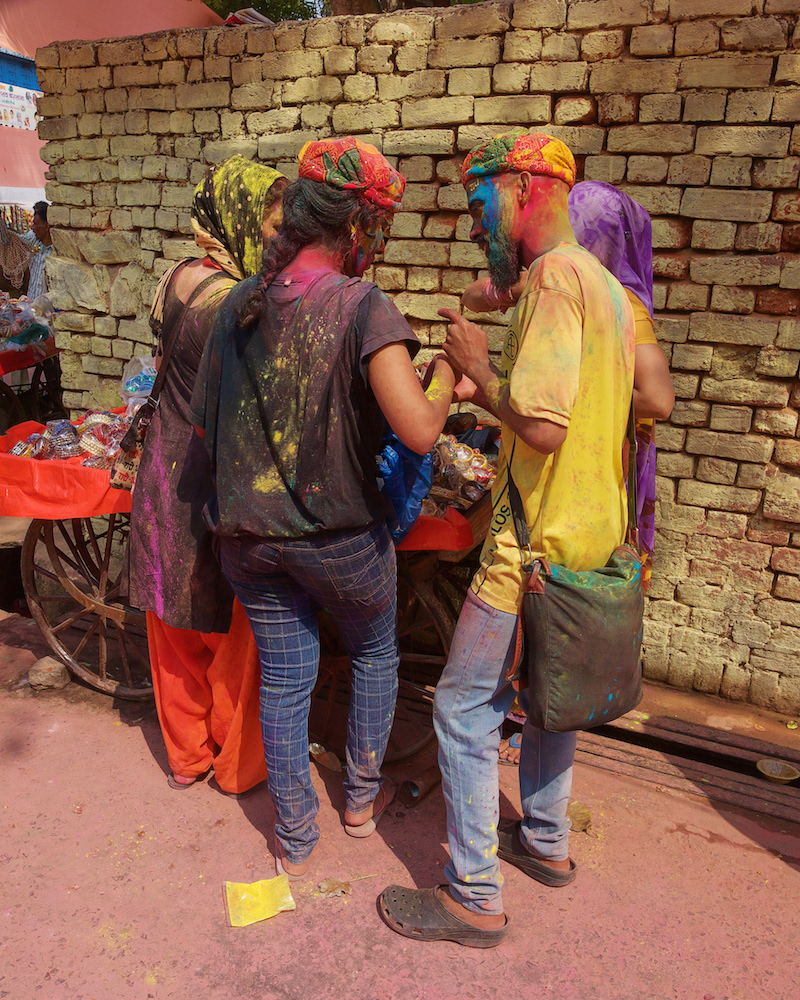
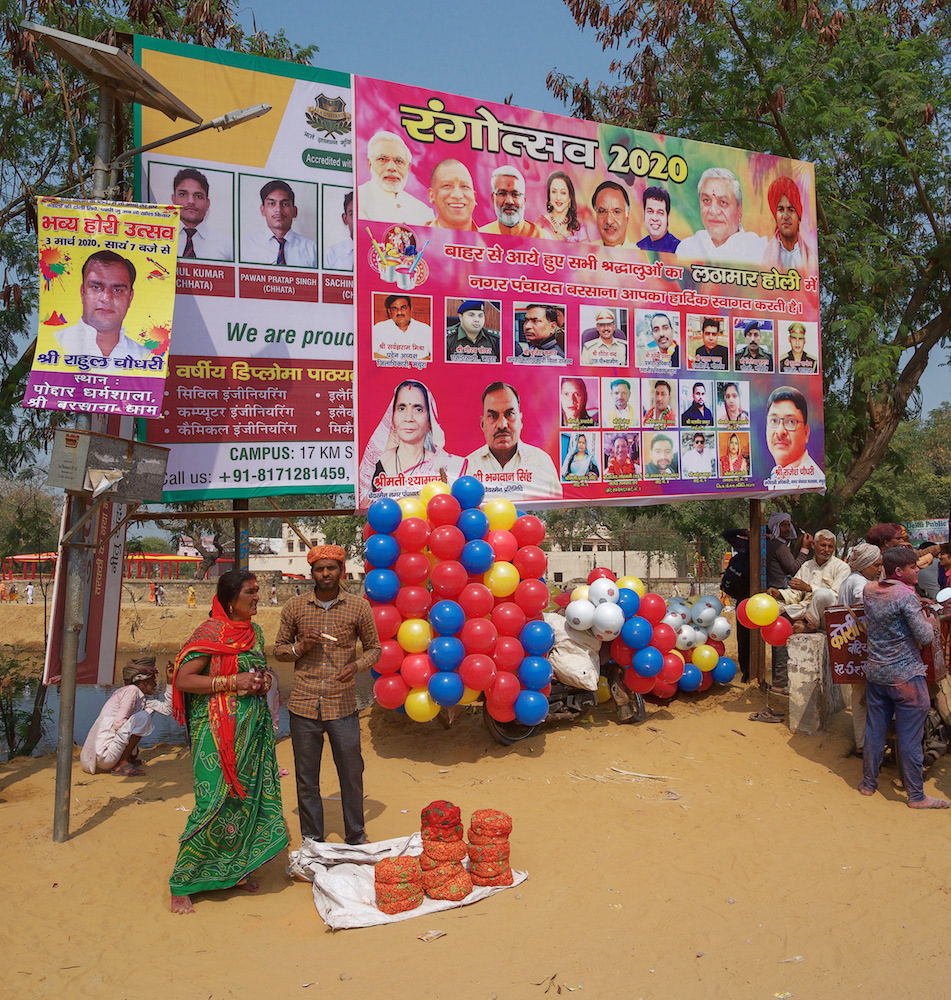
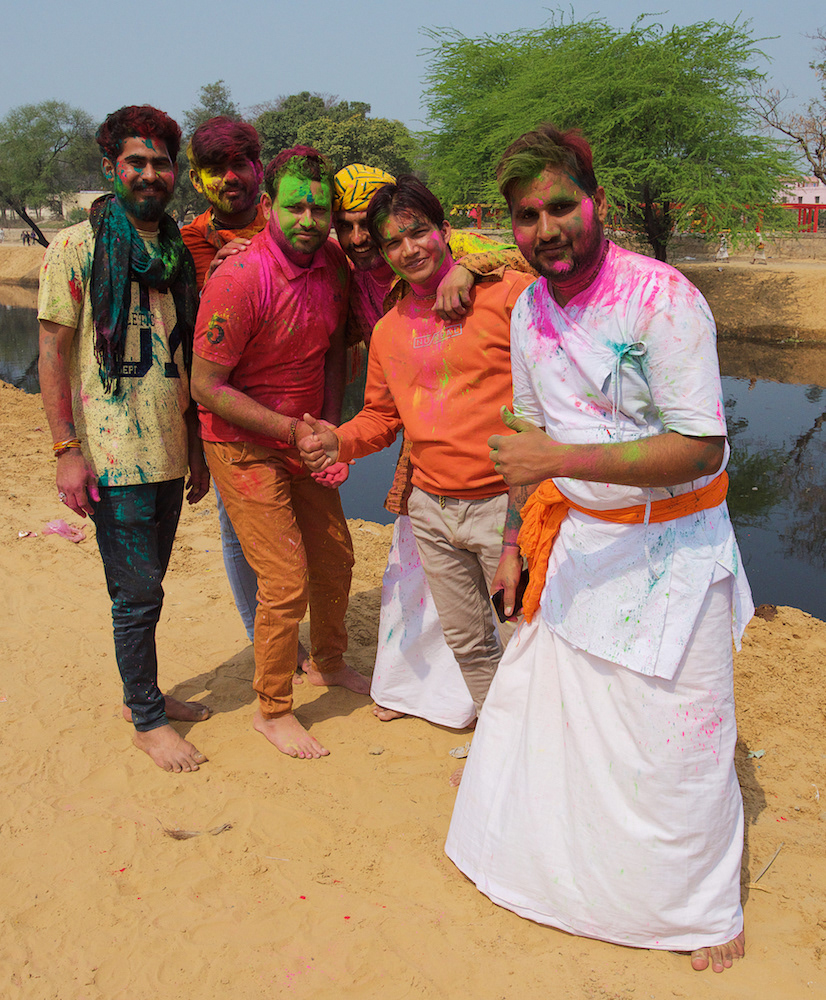
Anne with our guide Puru and his friends.
Now, the road has turned pink from all the powder that's been thrown during the day.
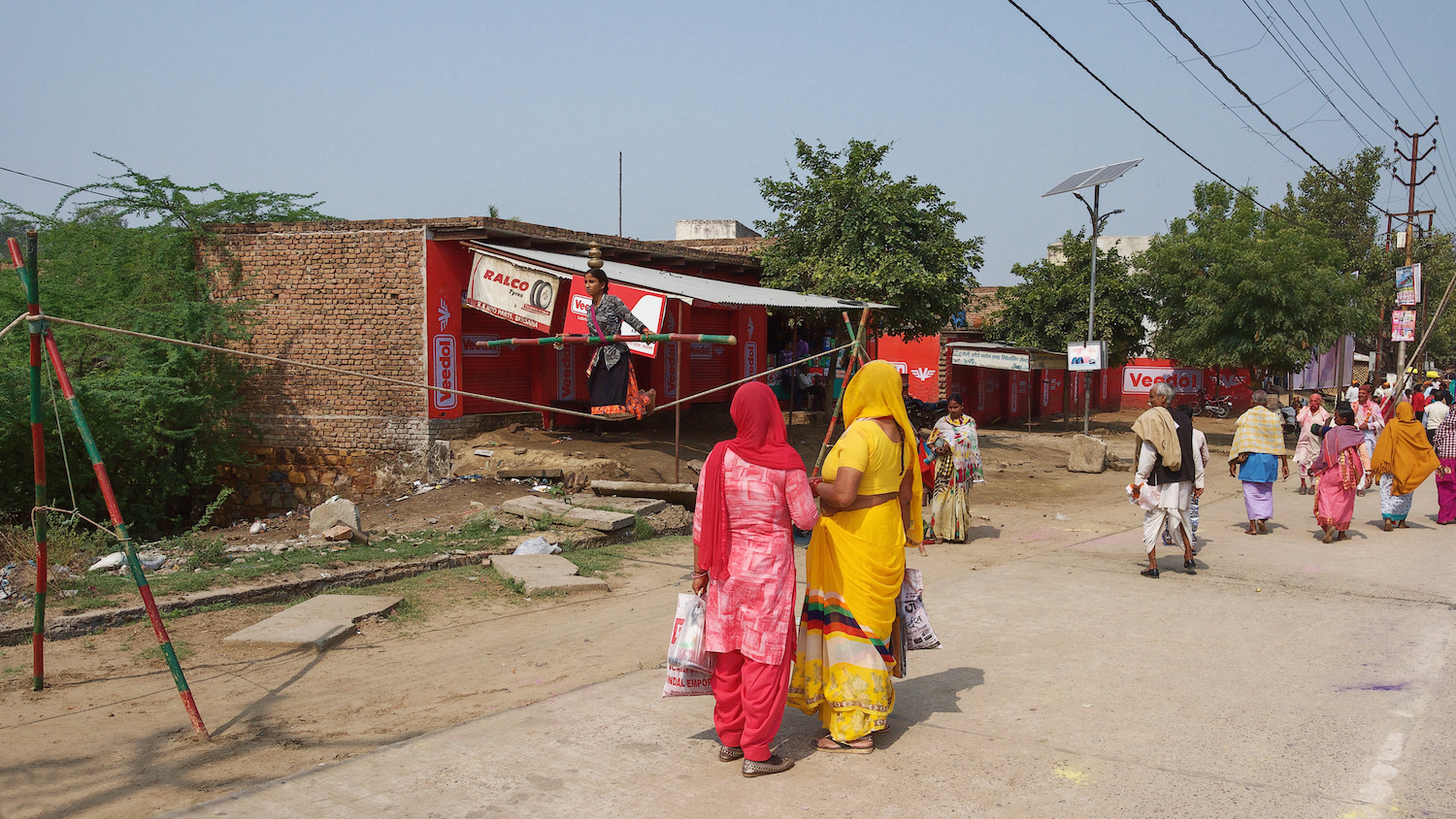
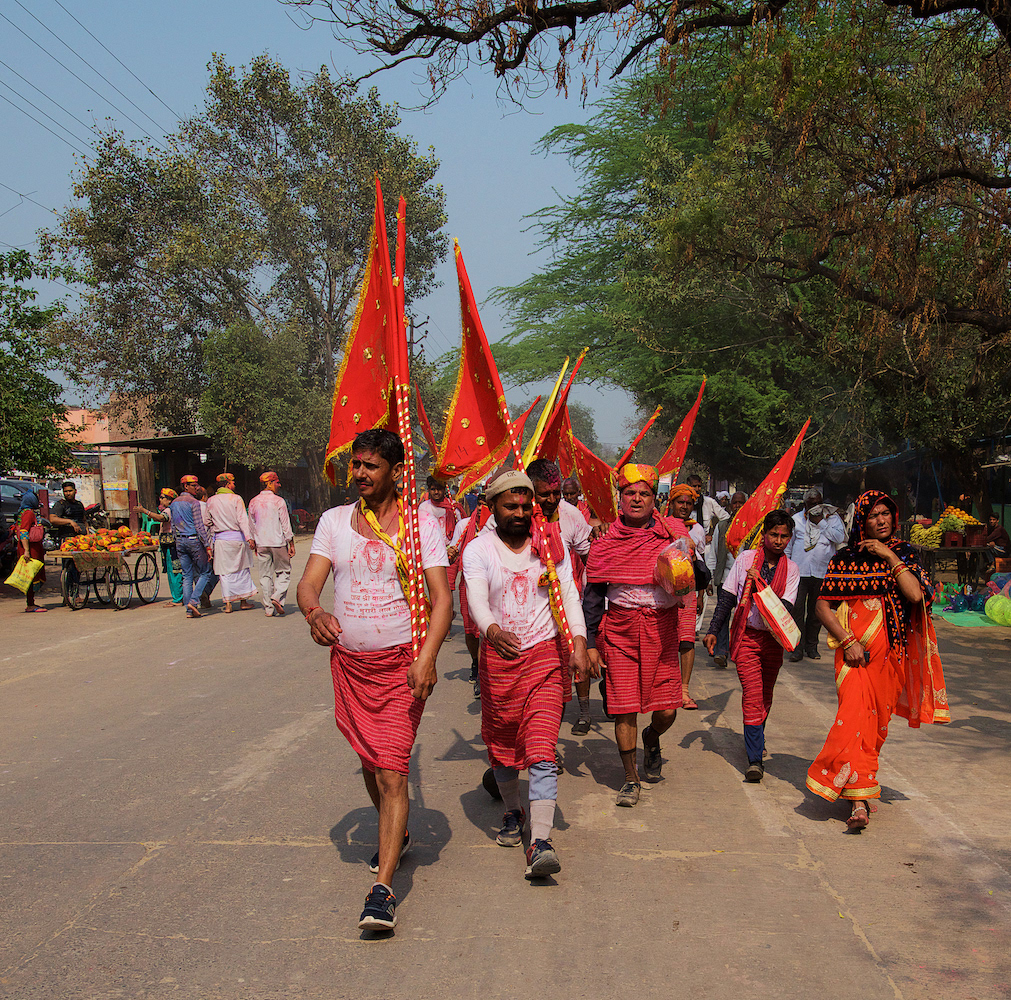

Photographs ©Don Davies
